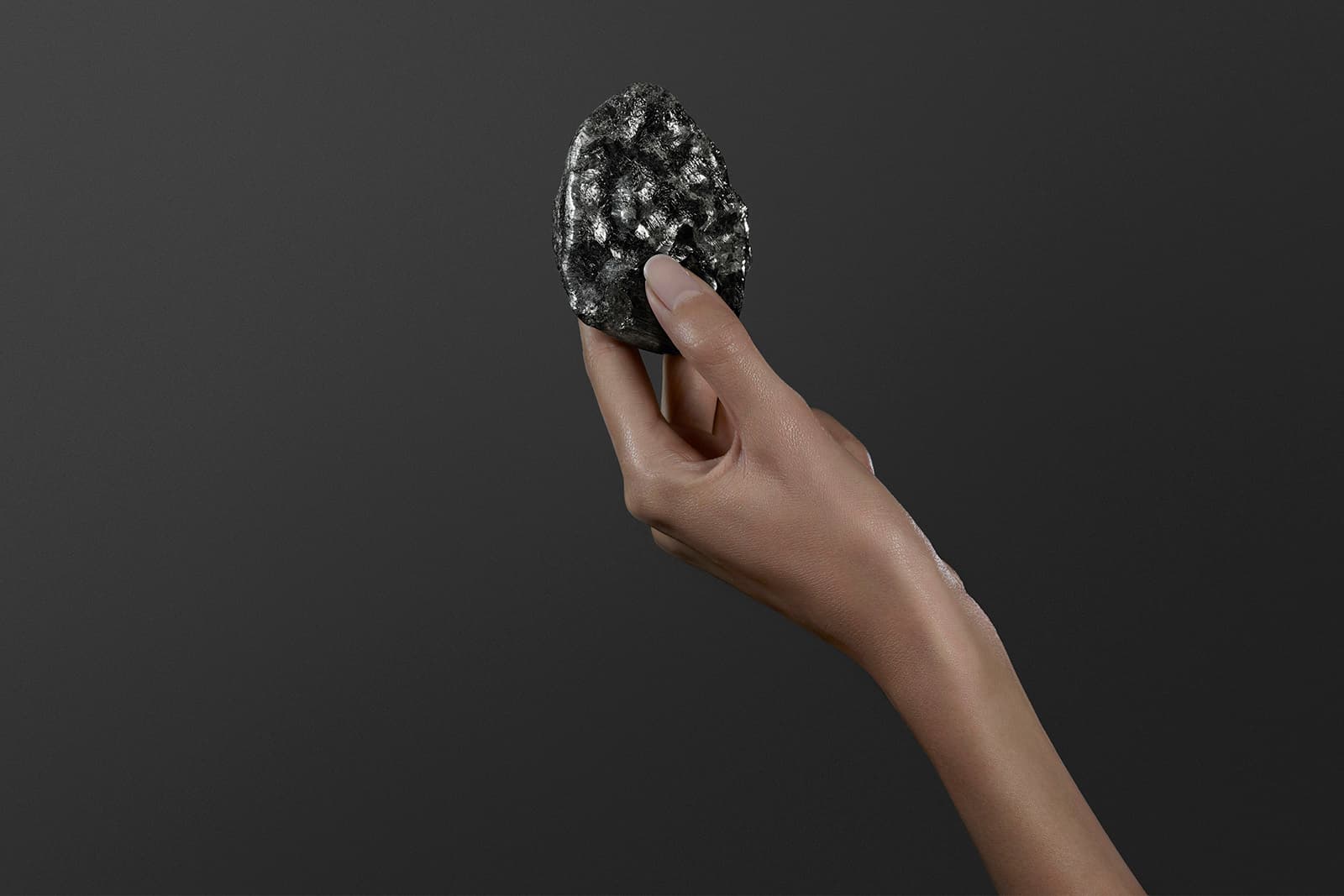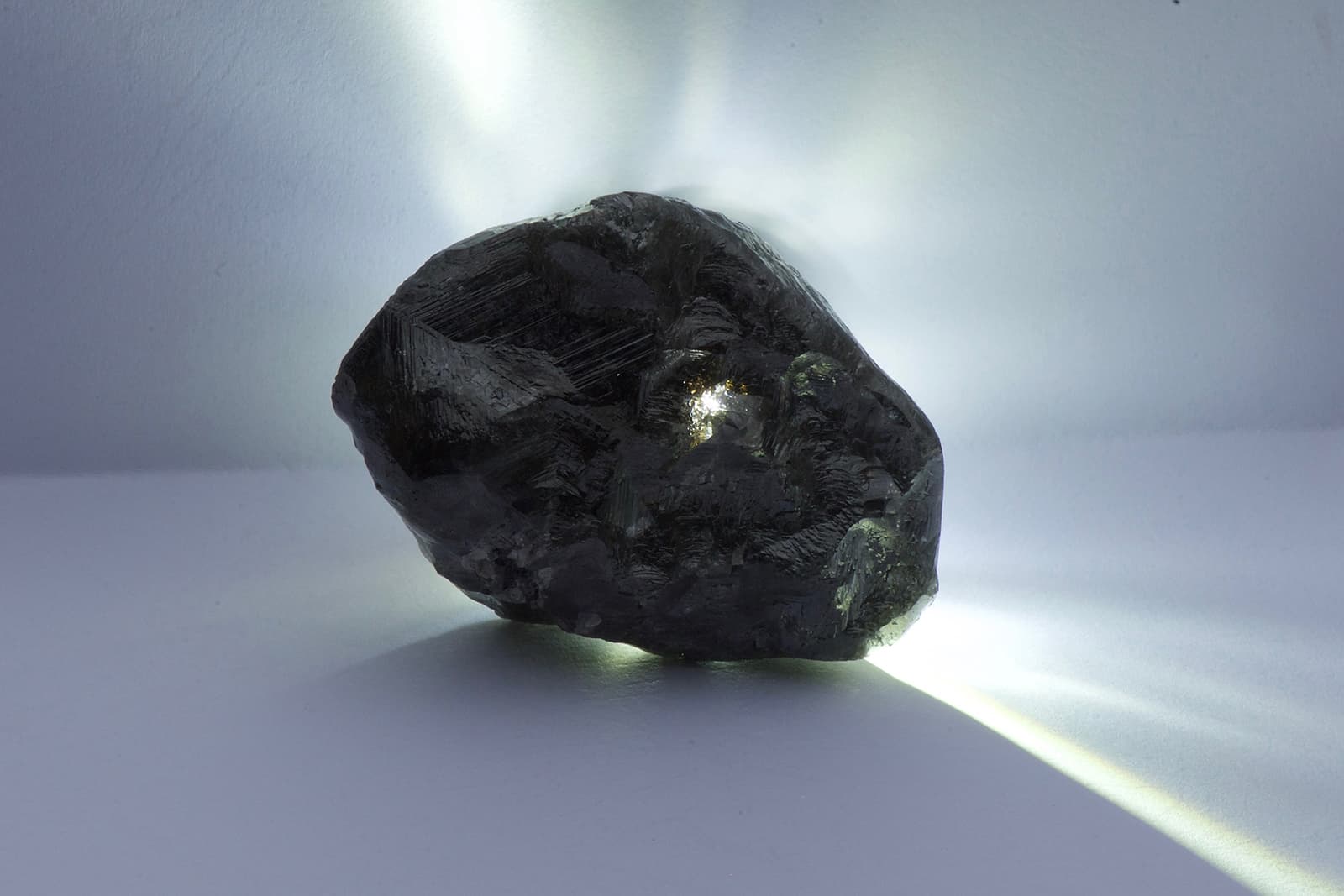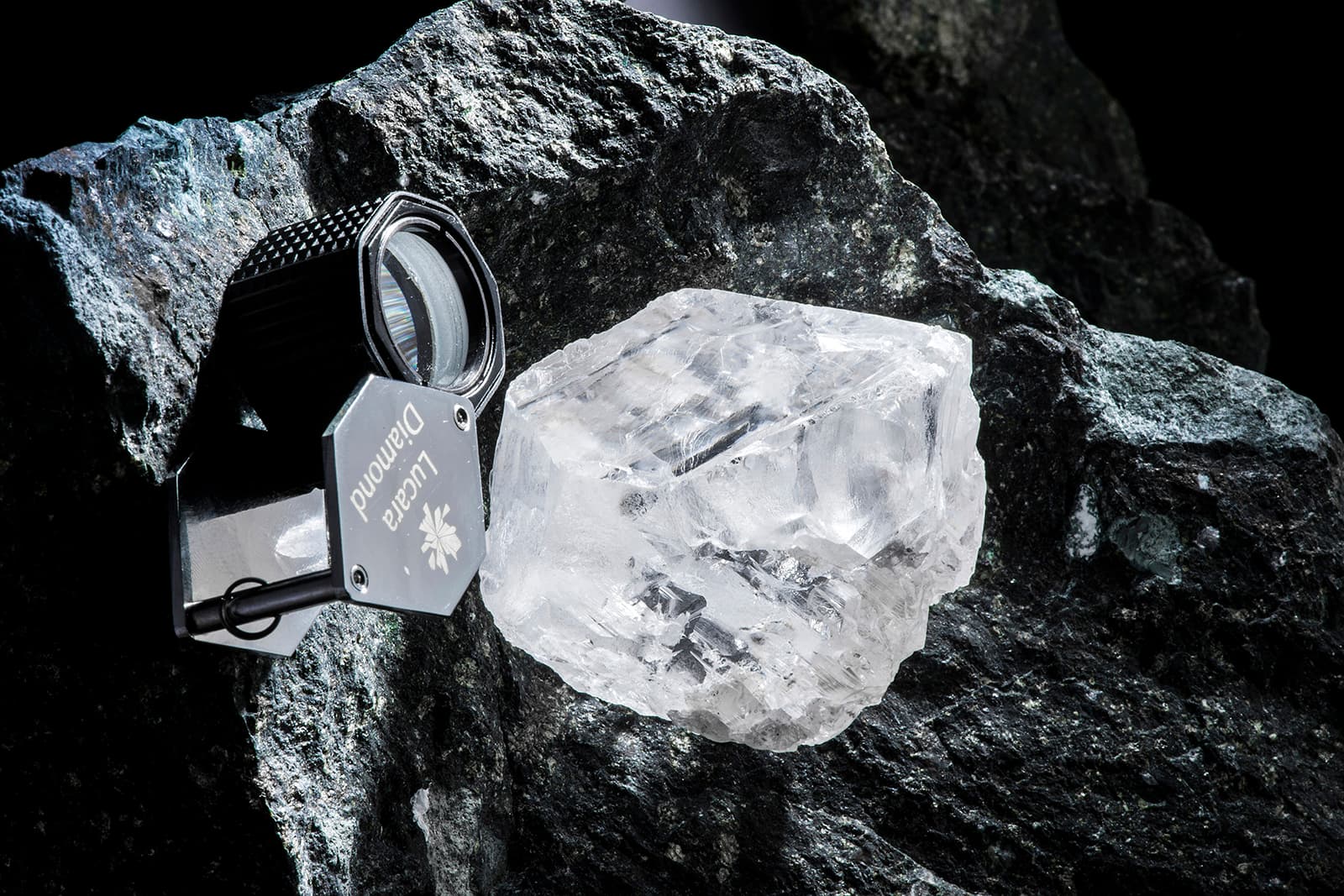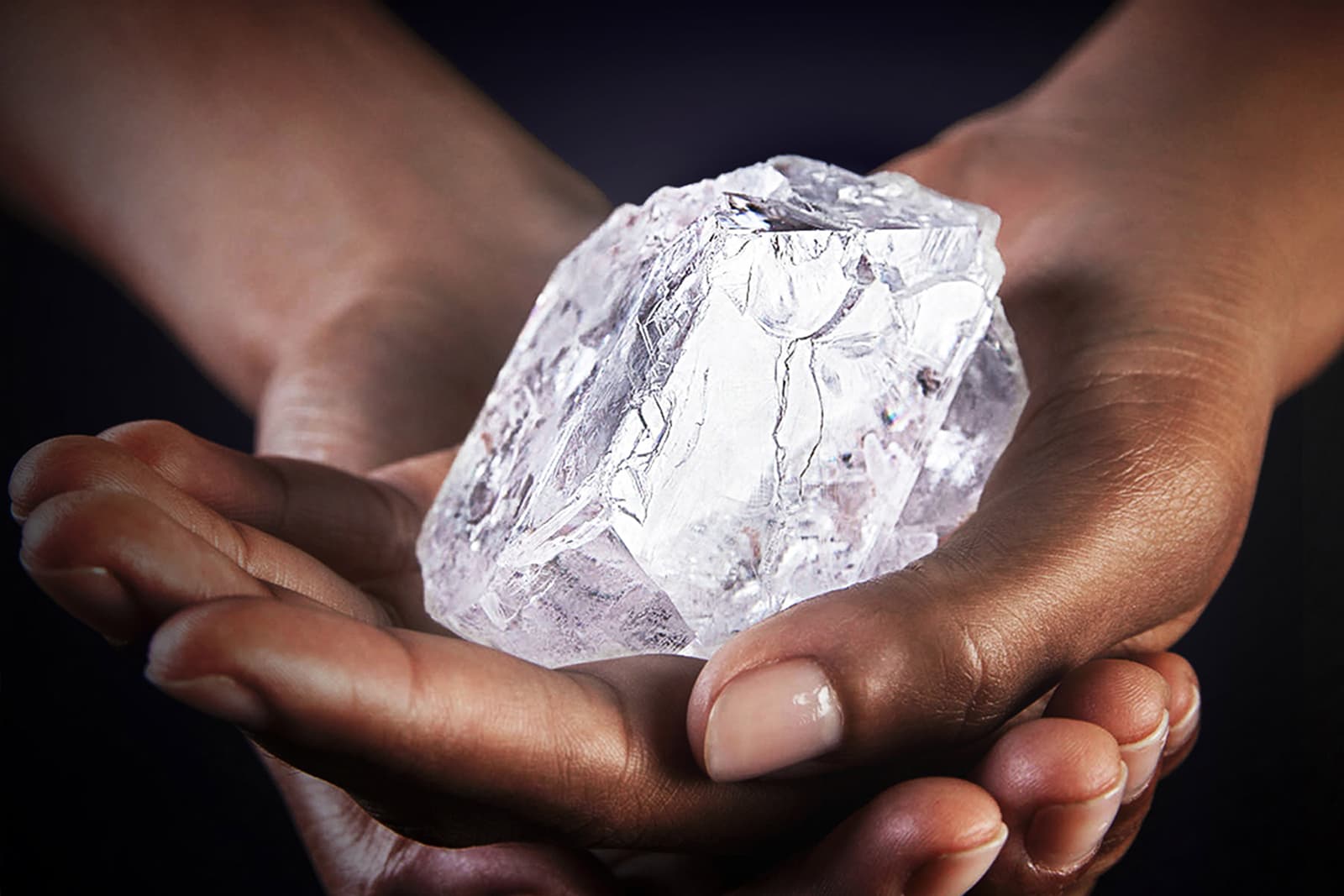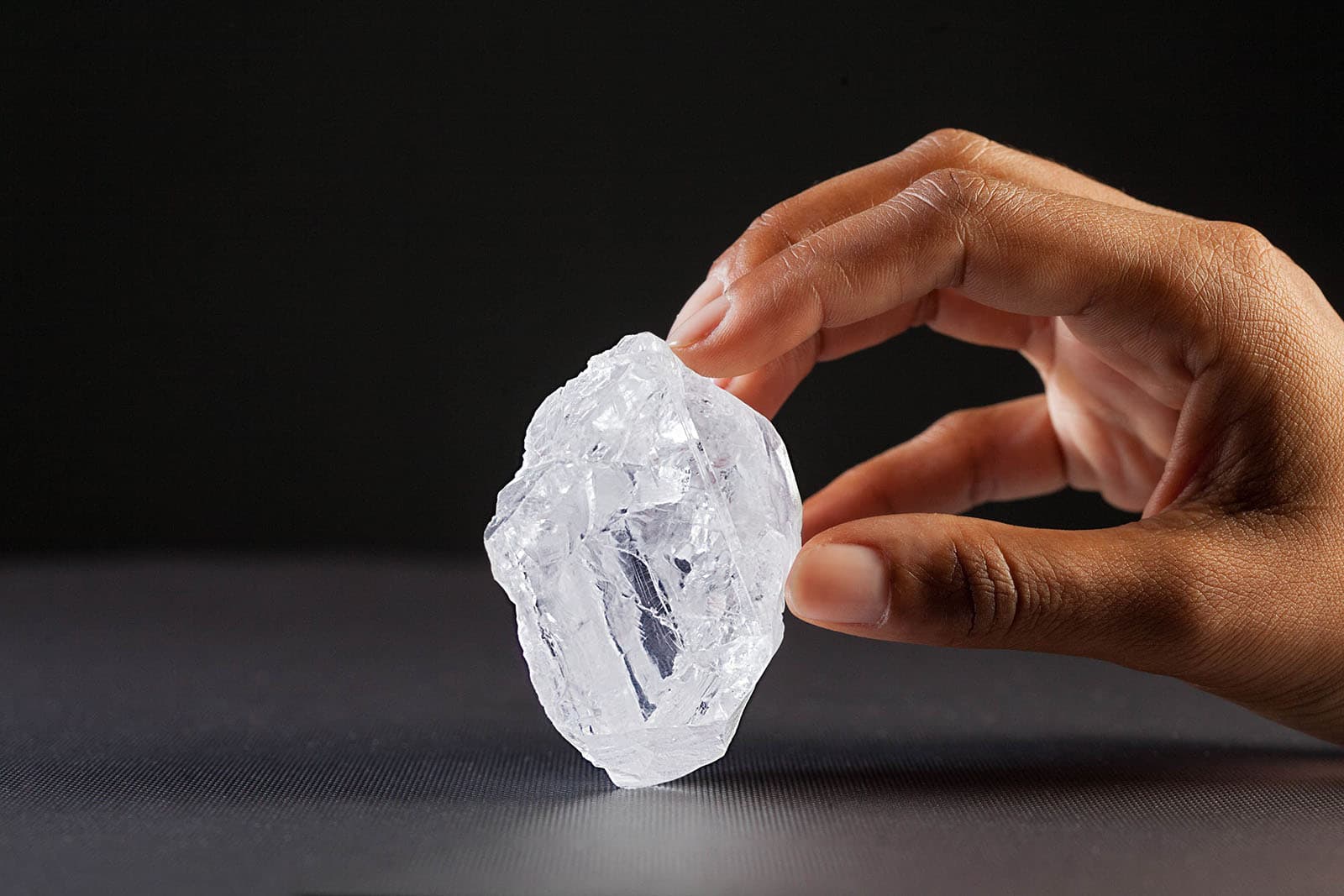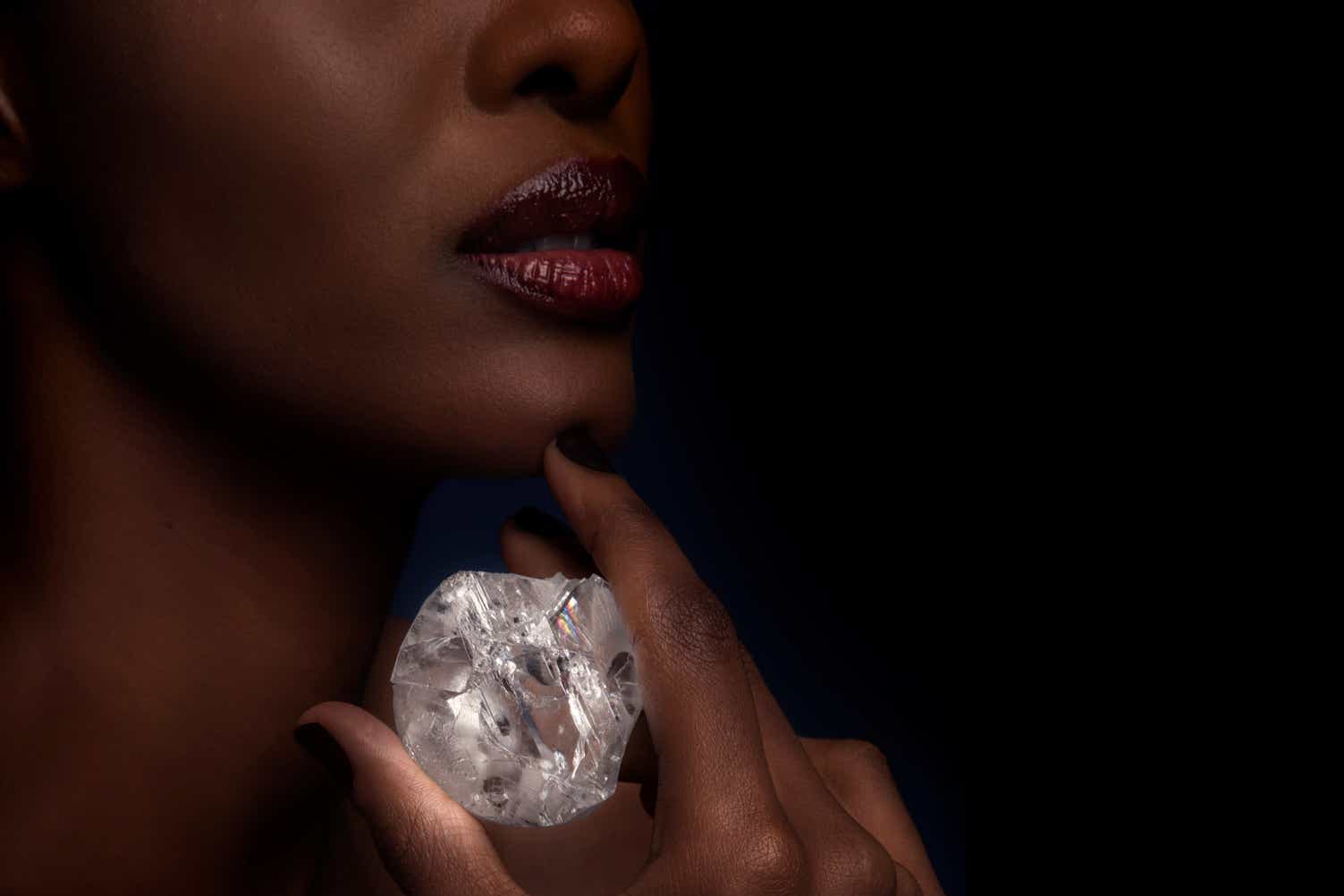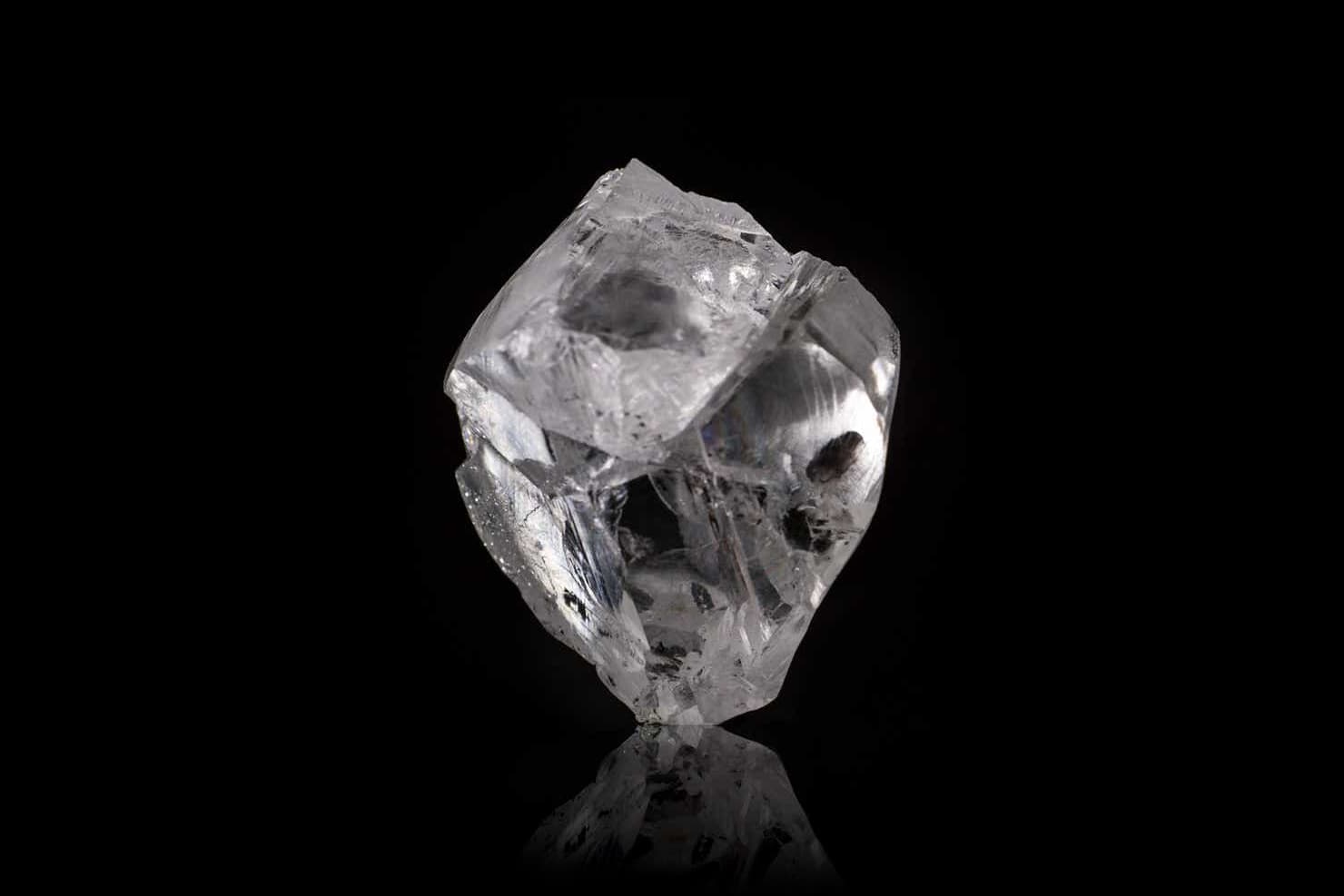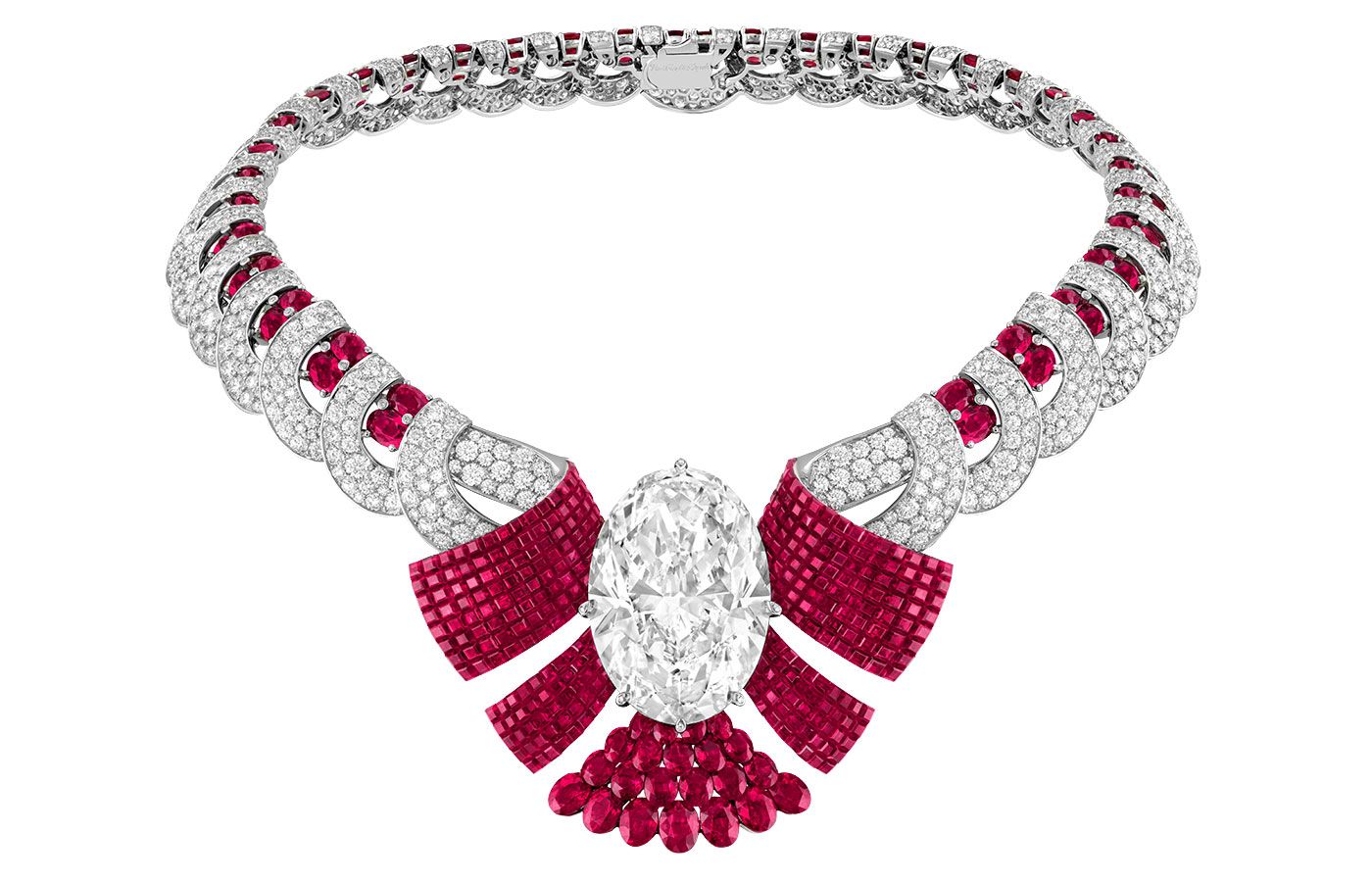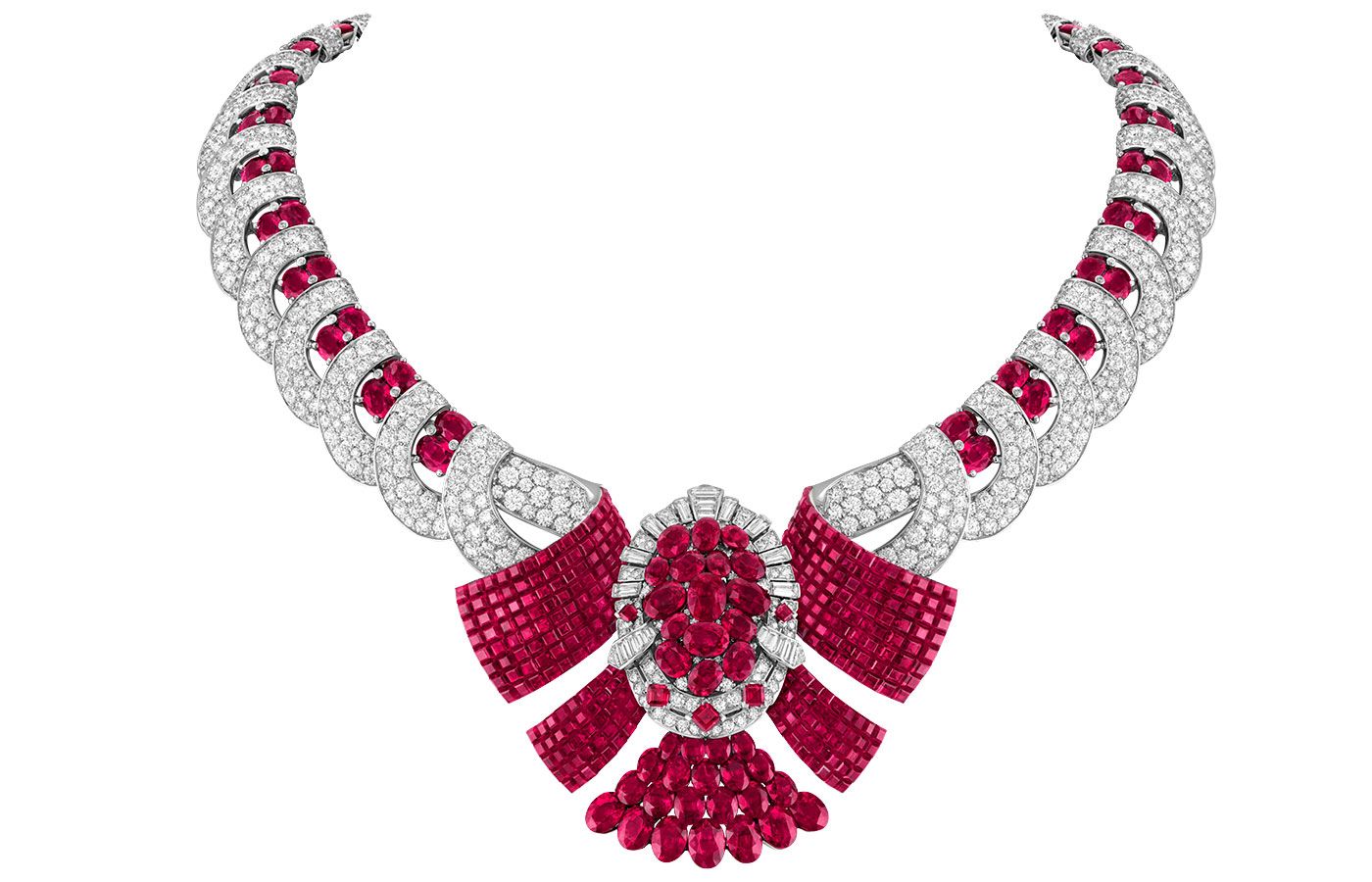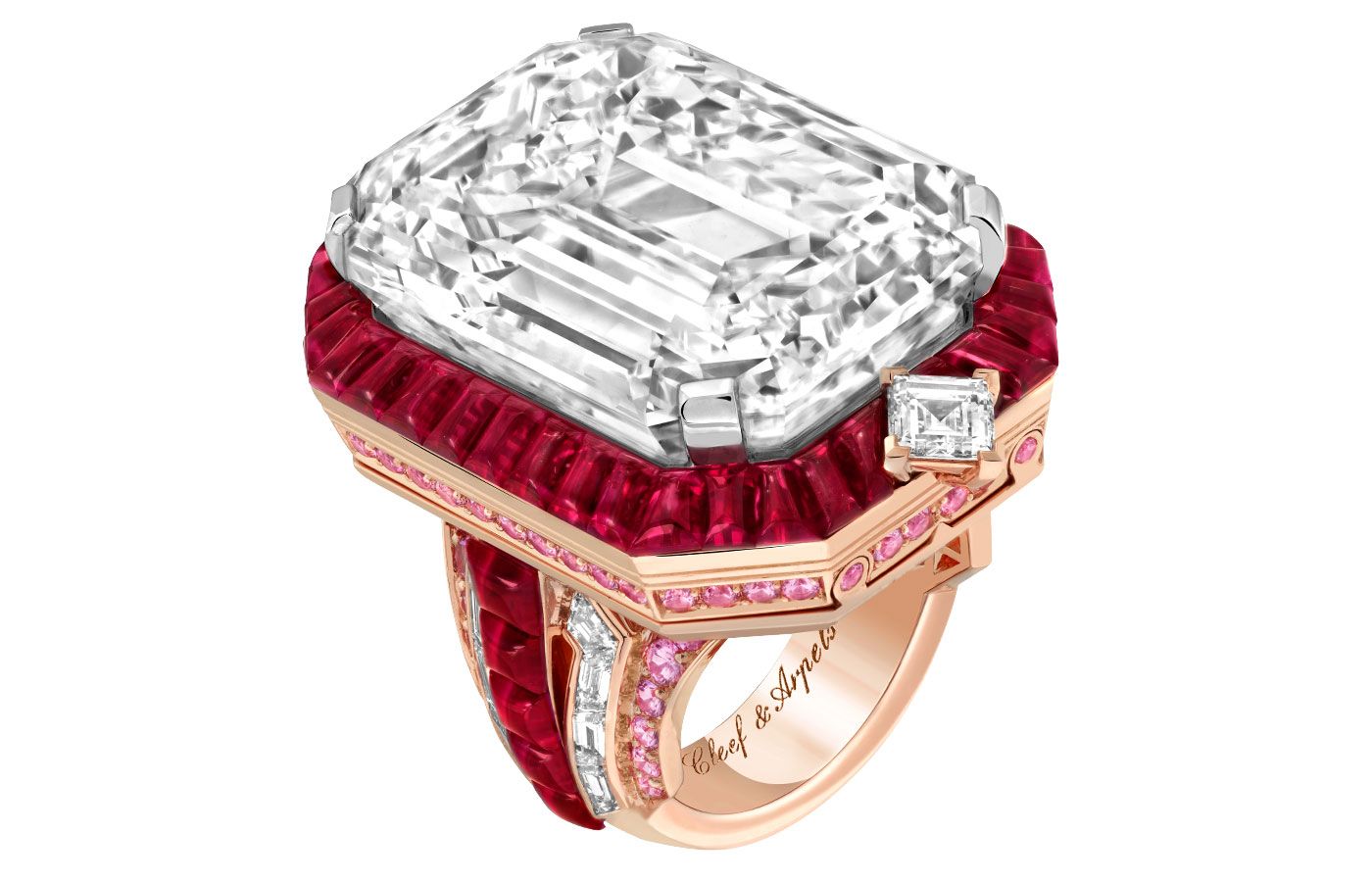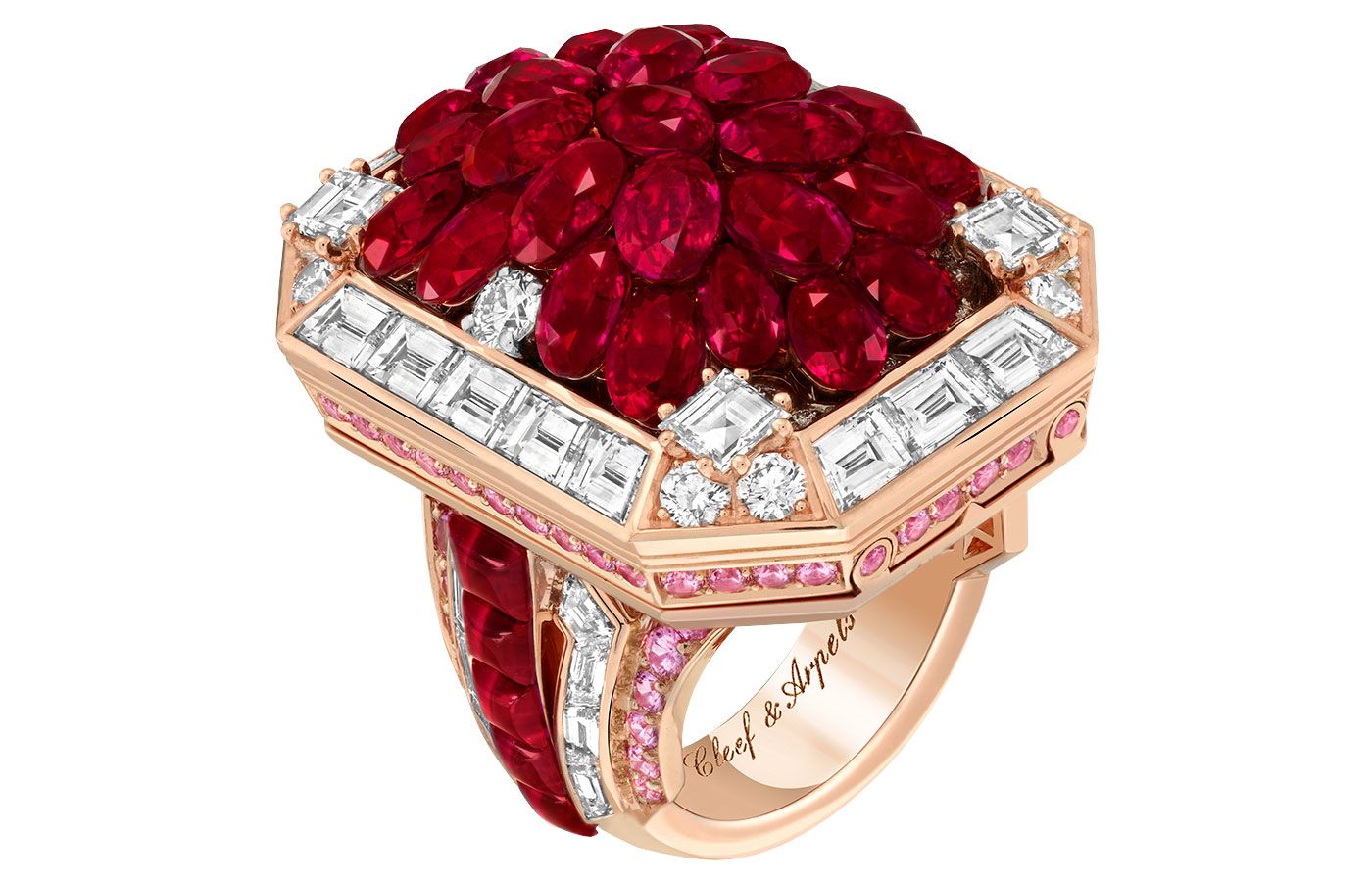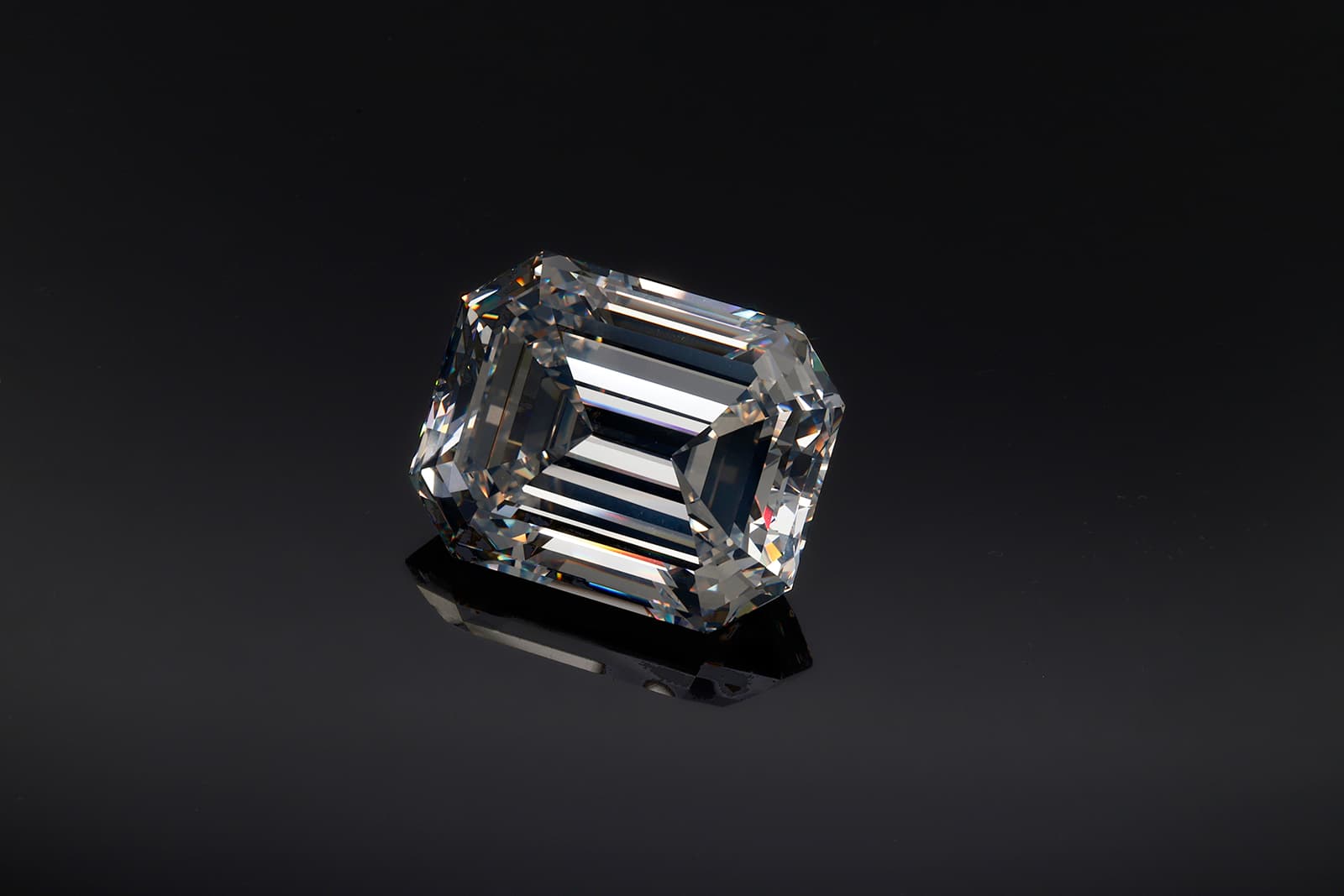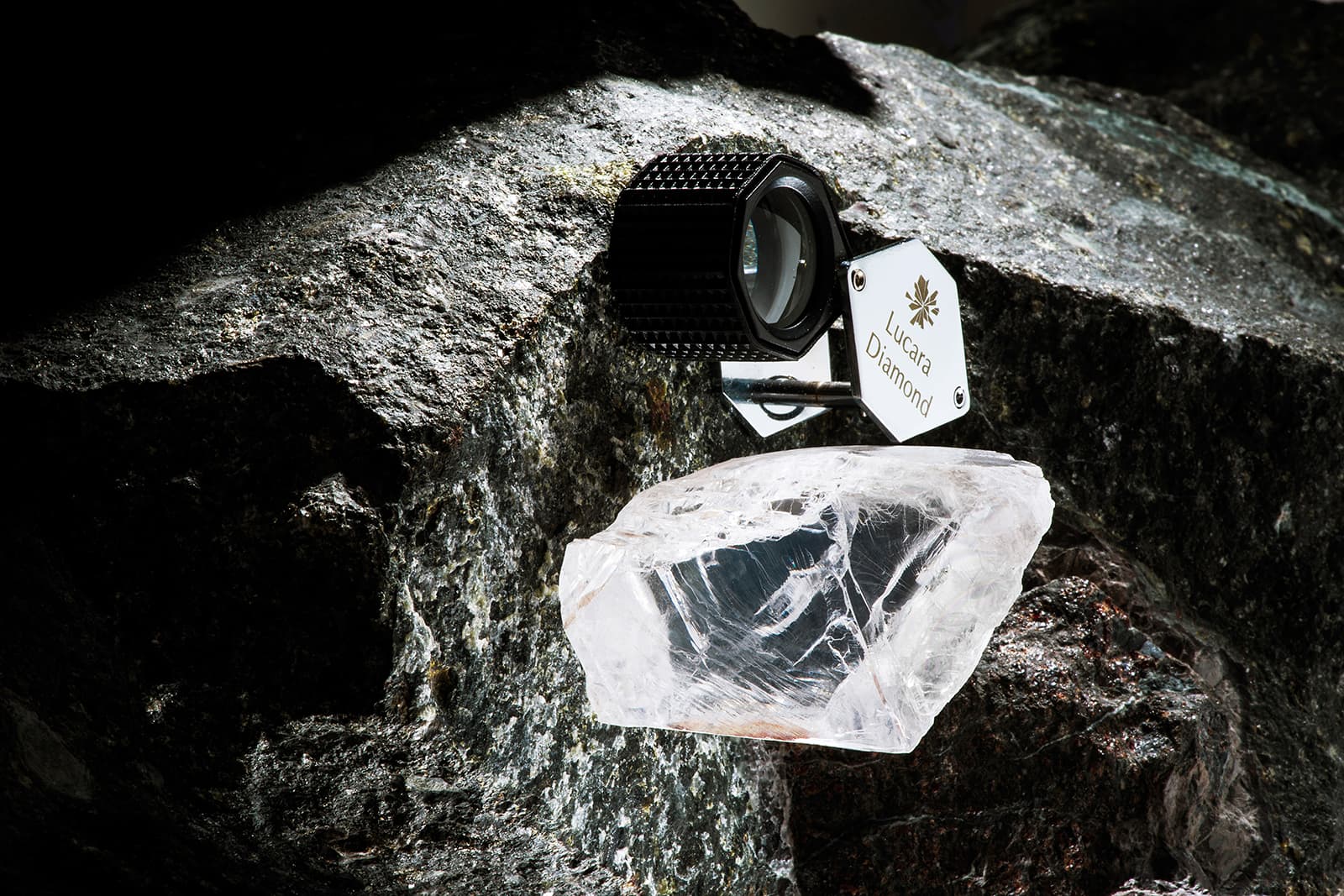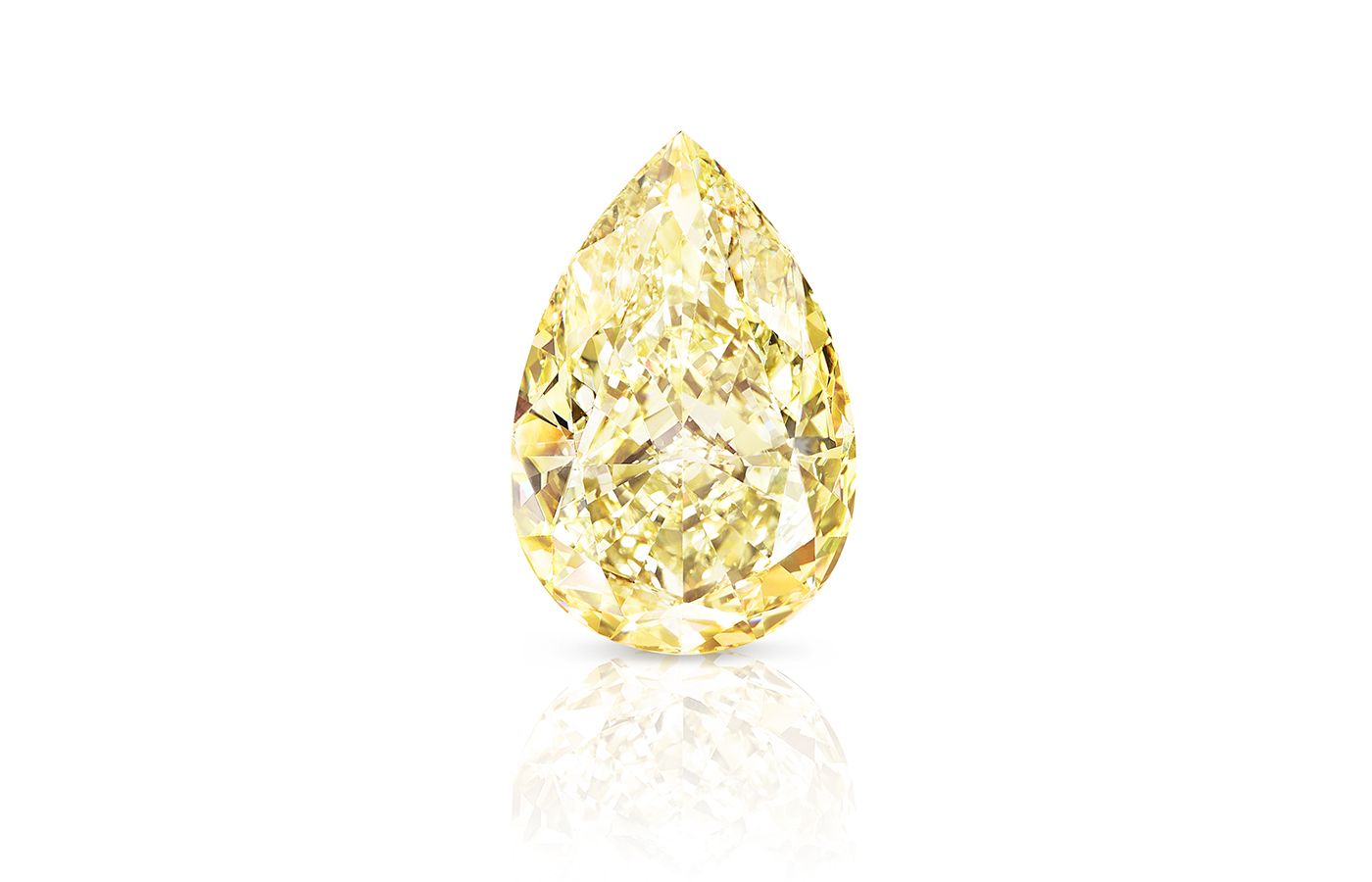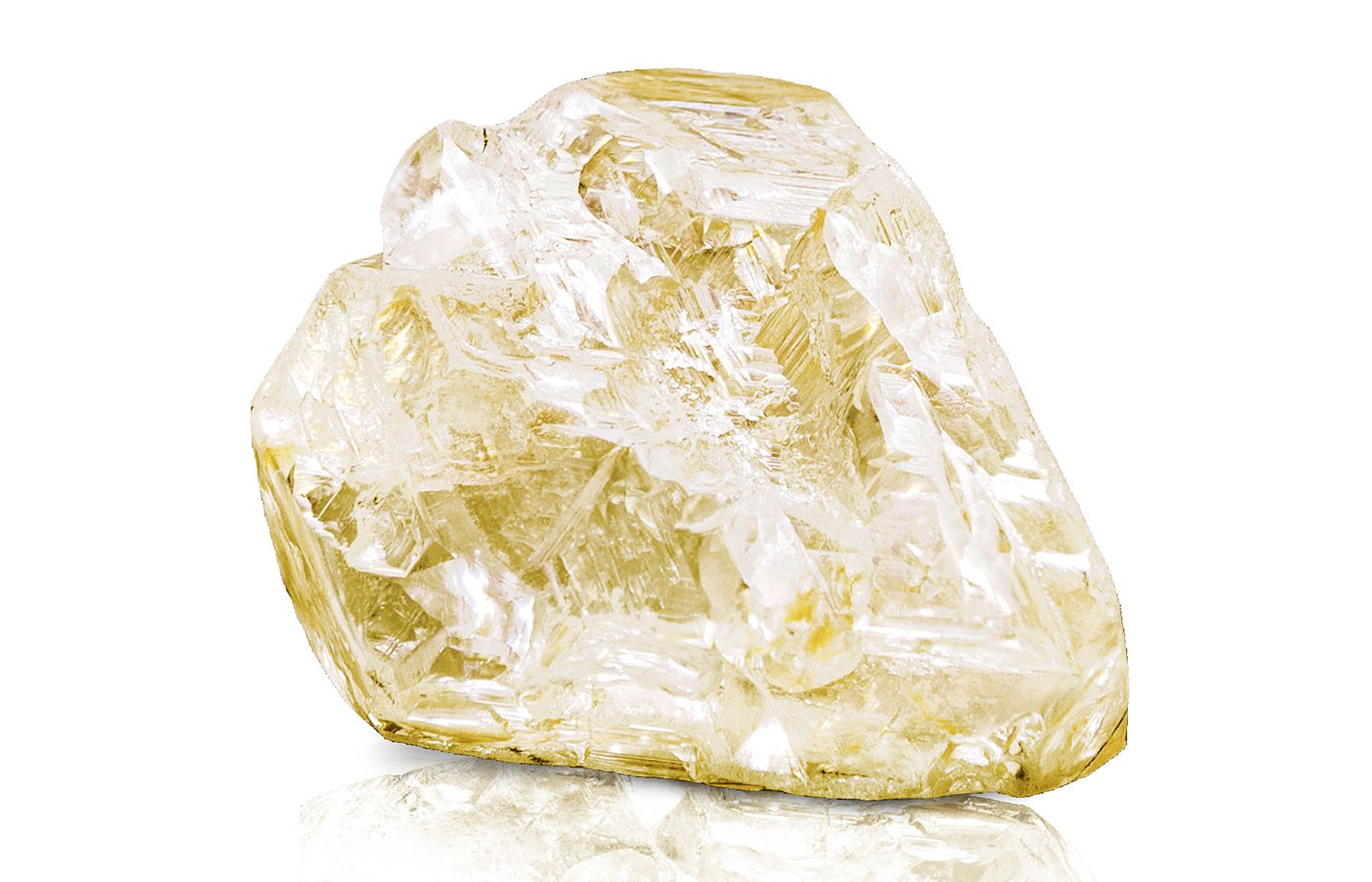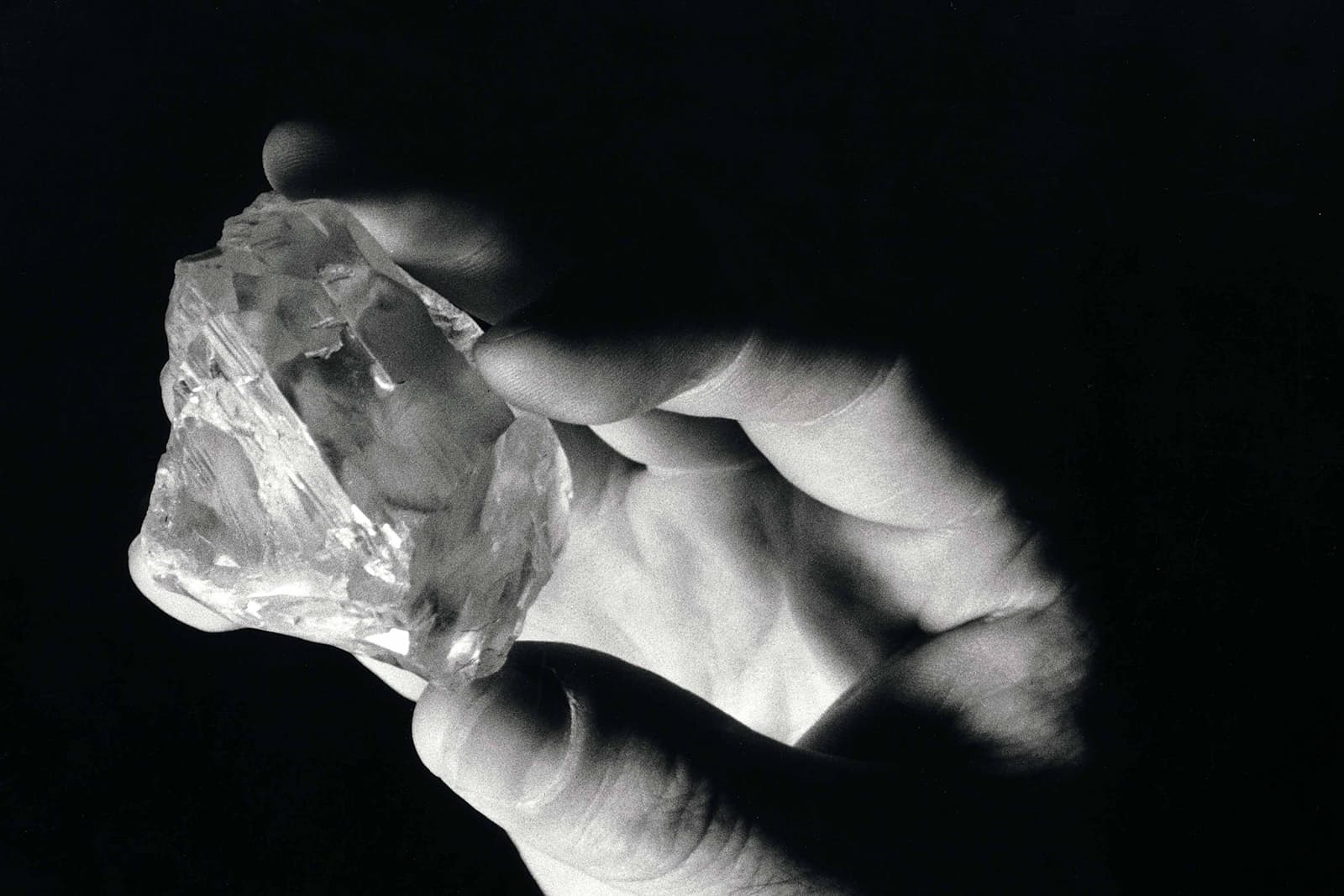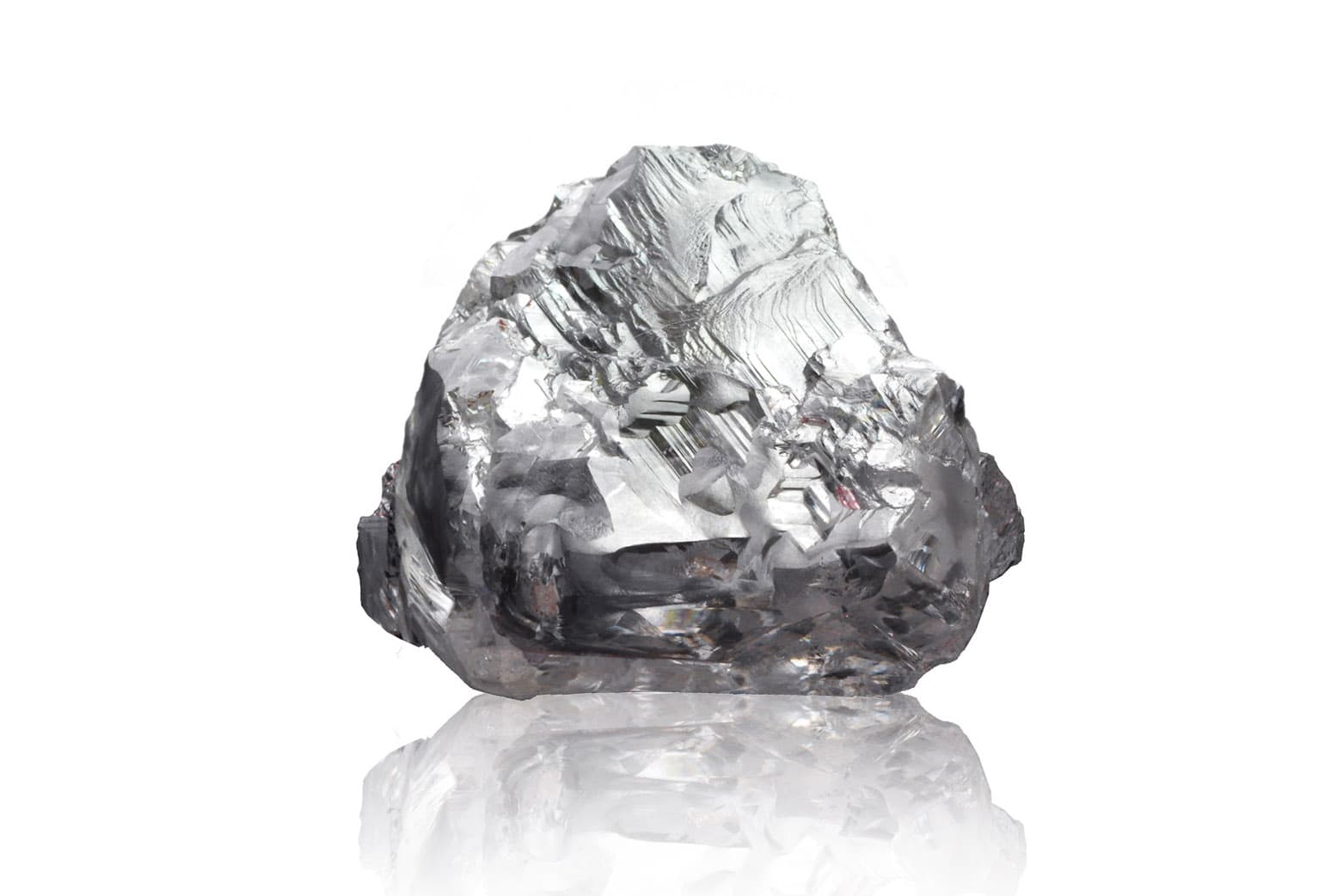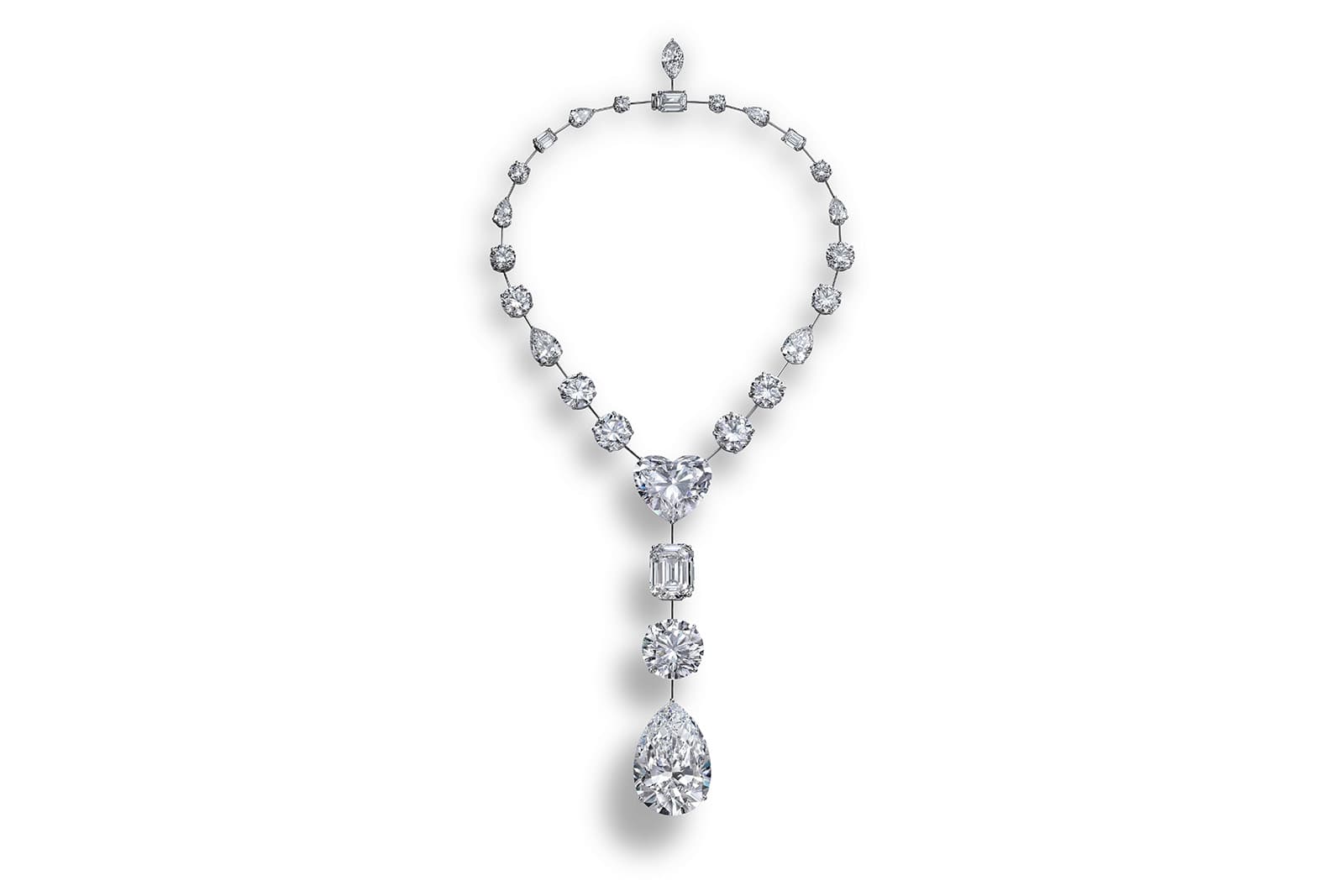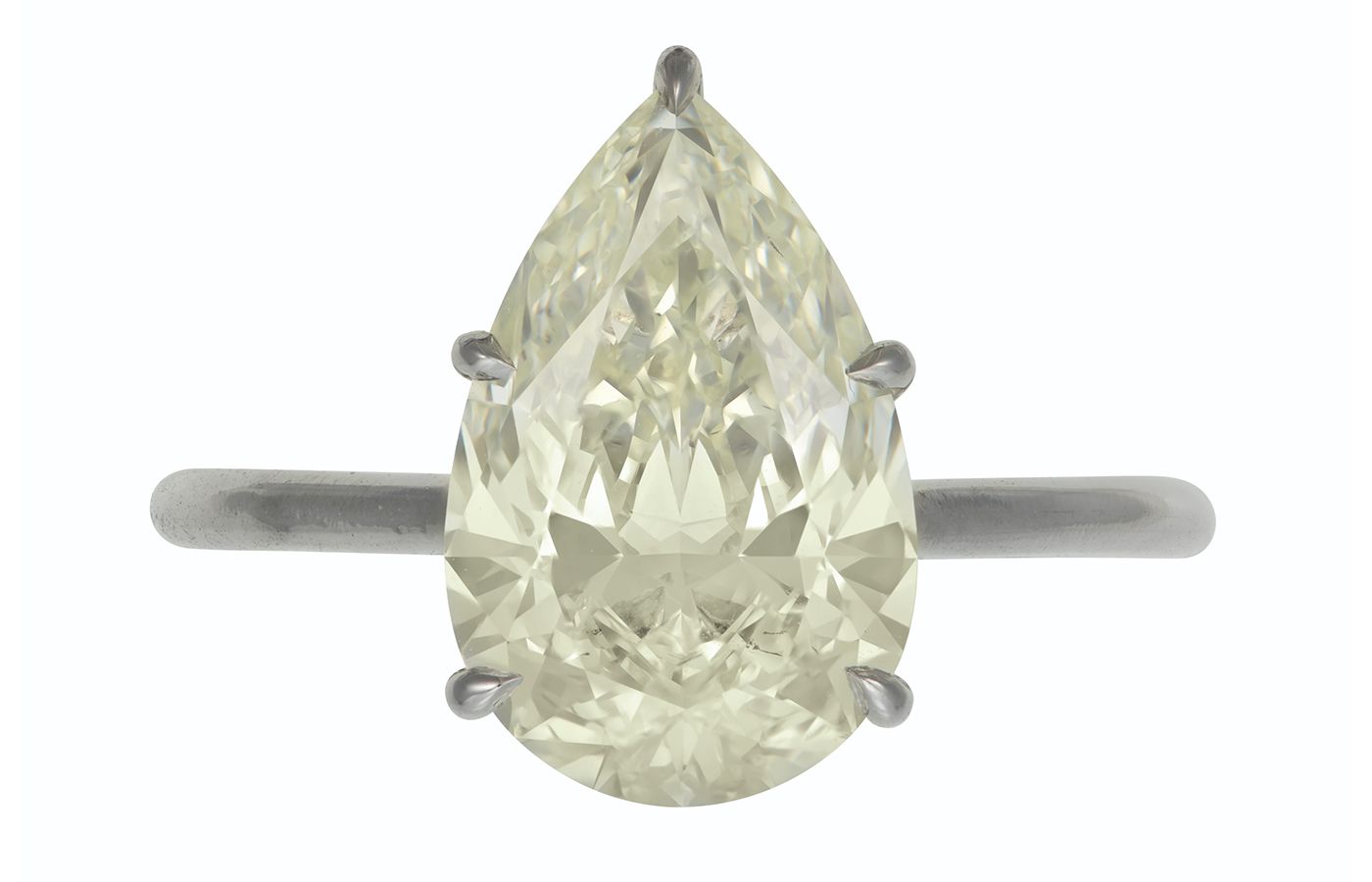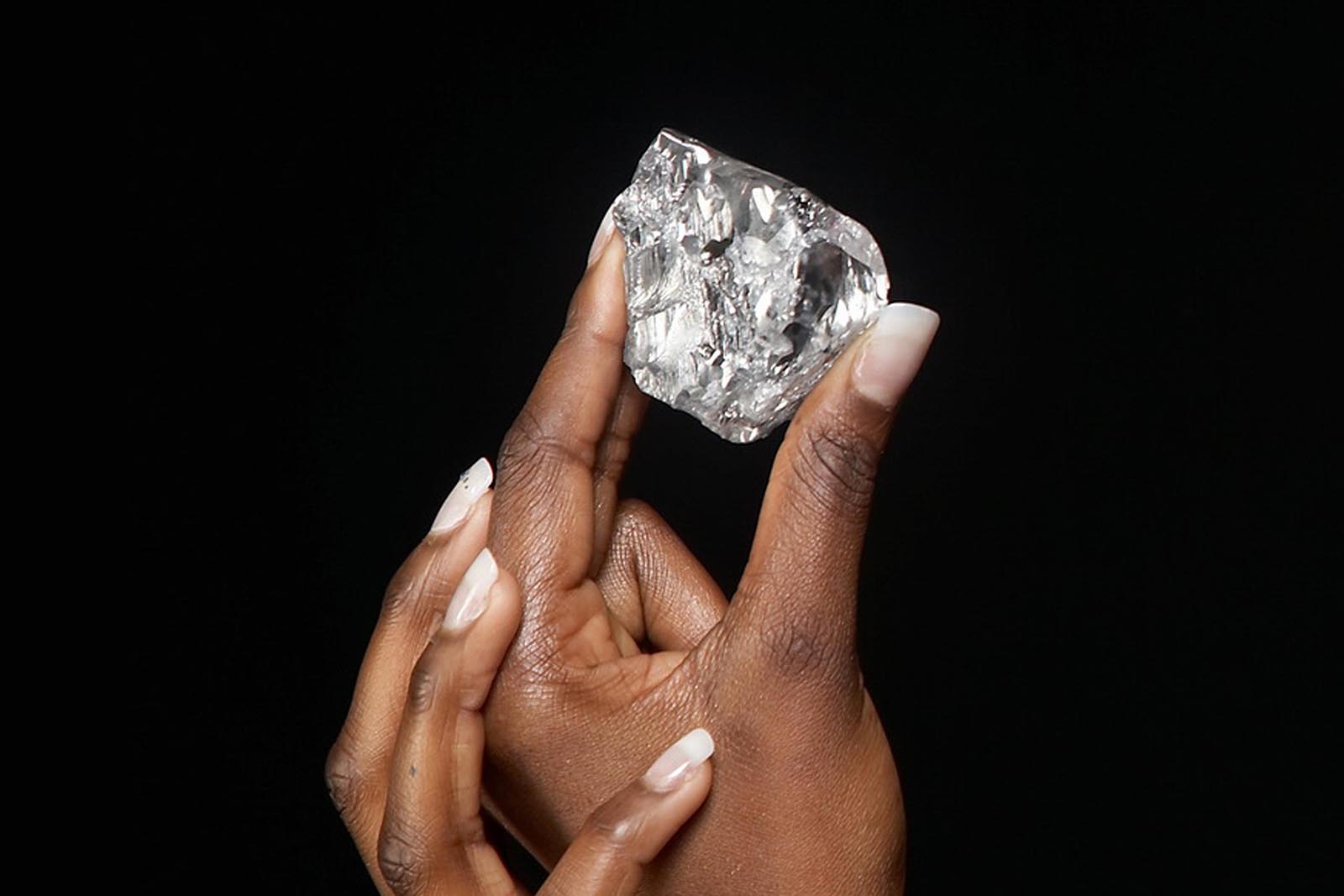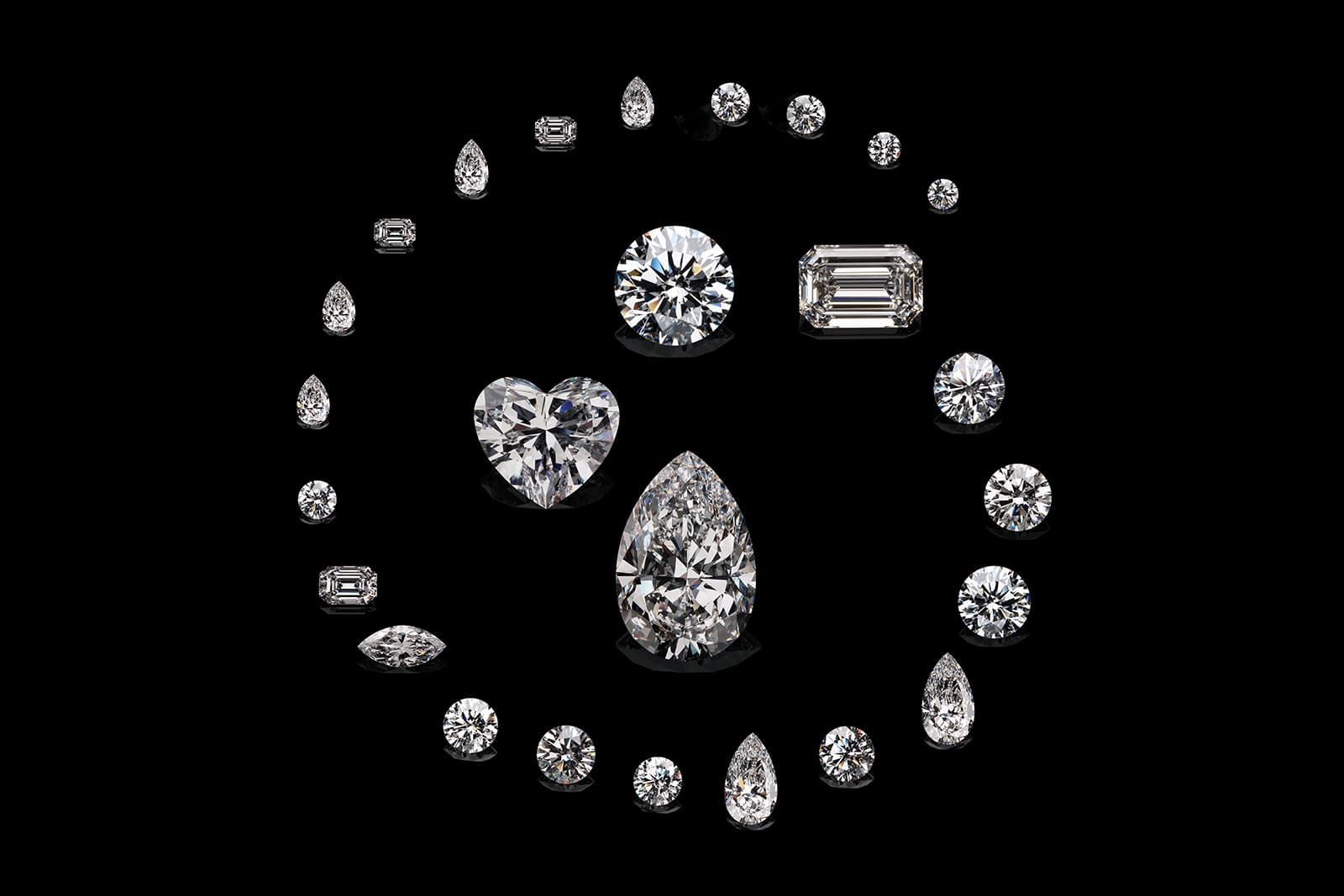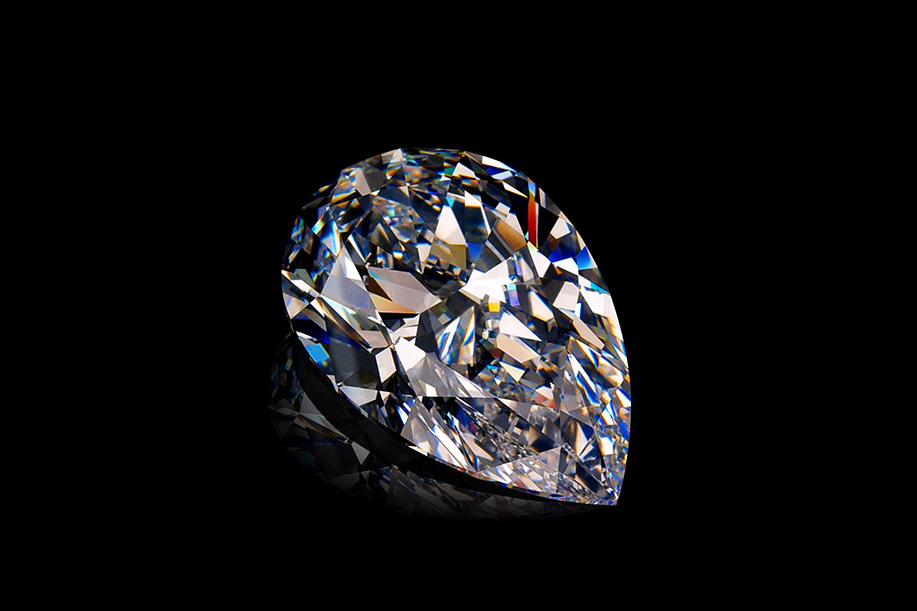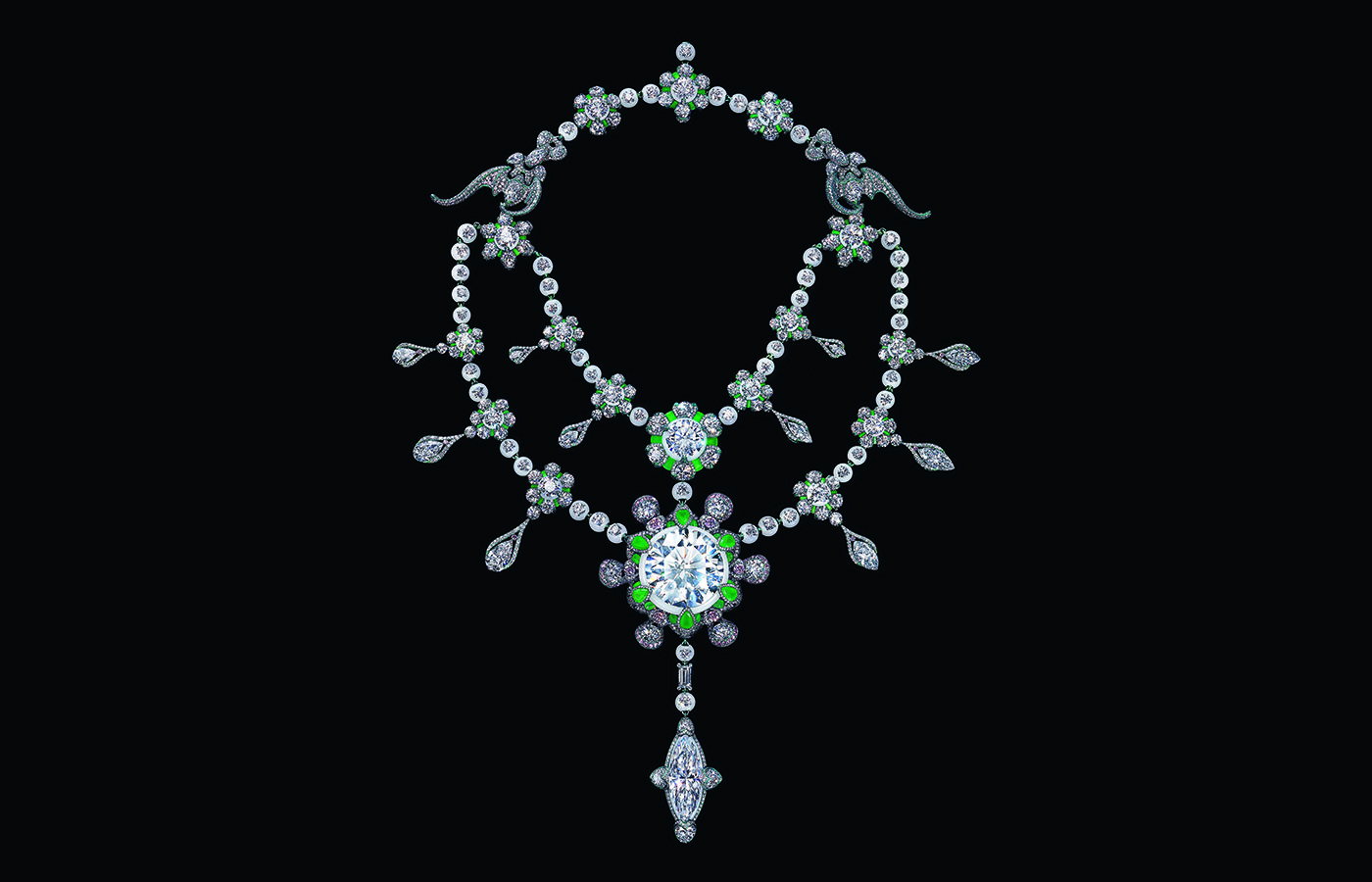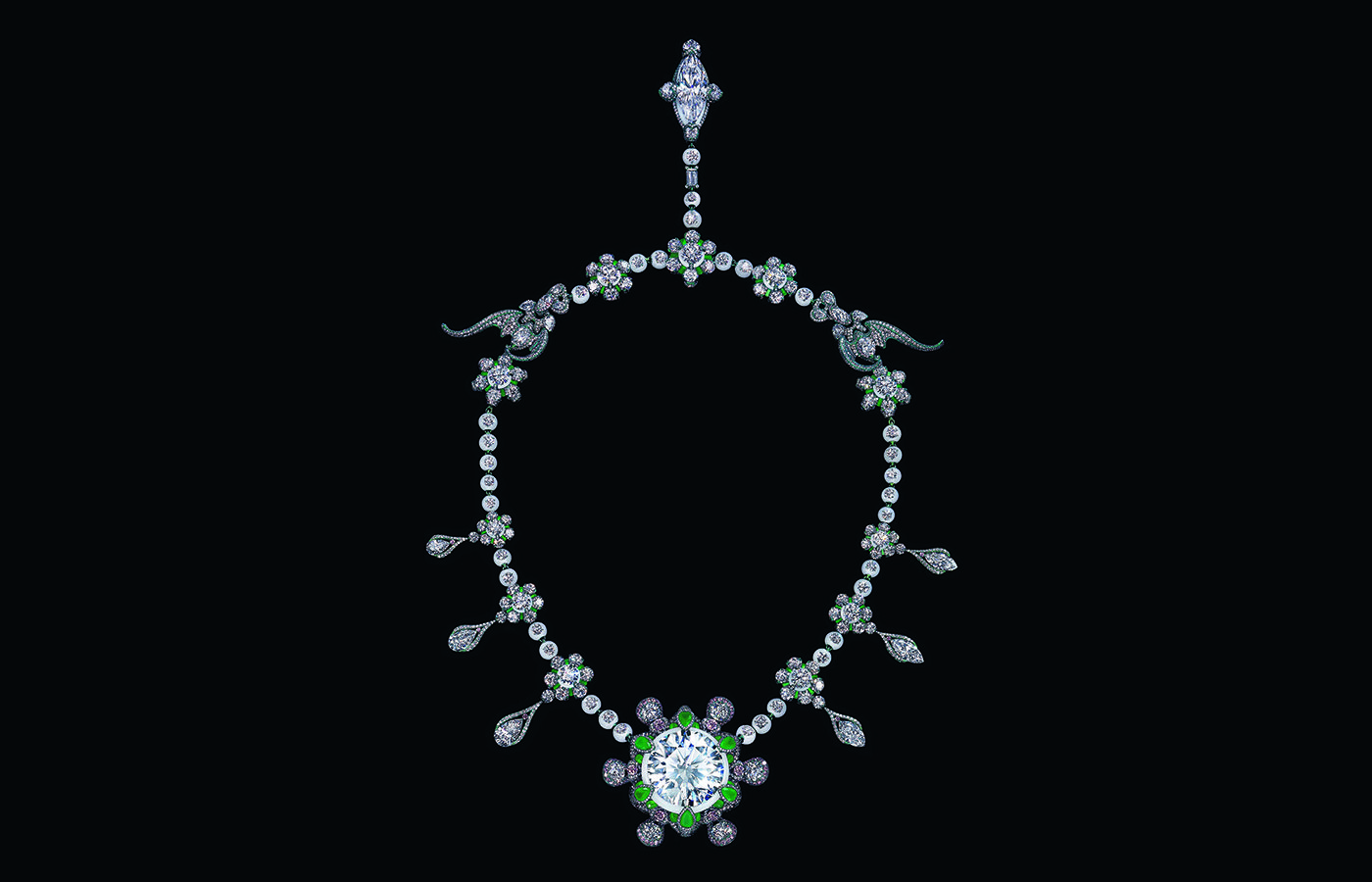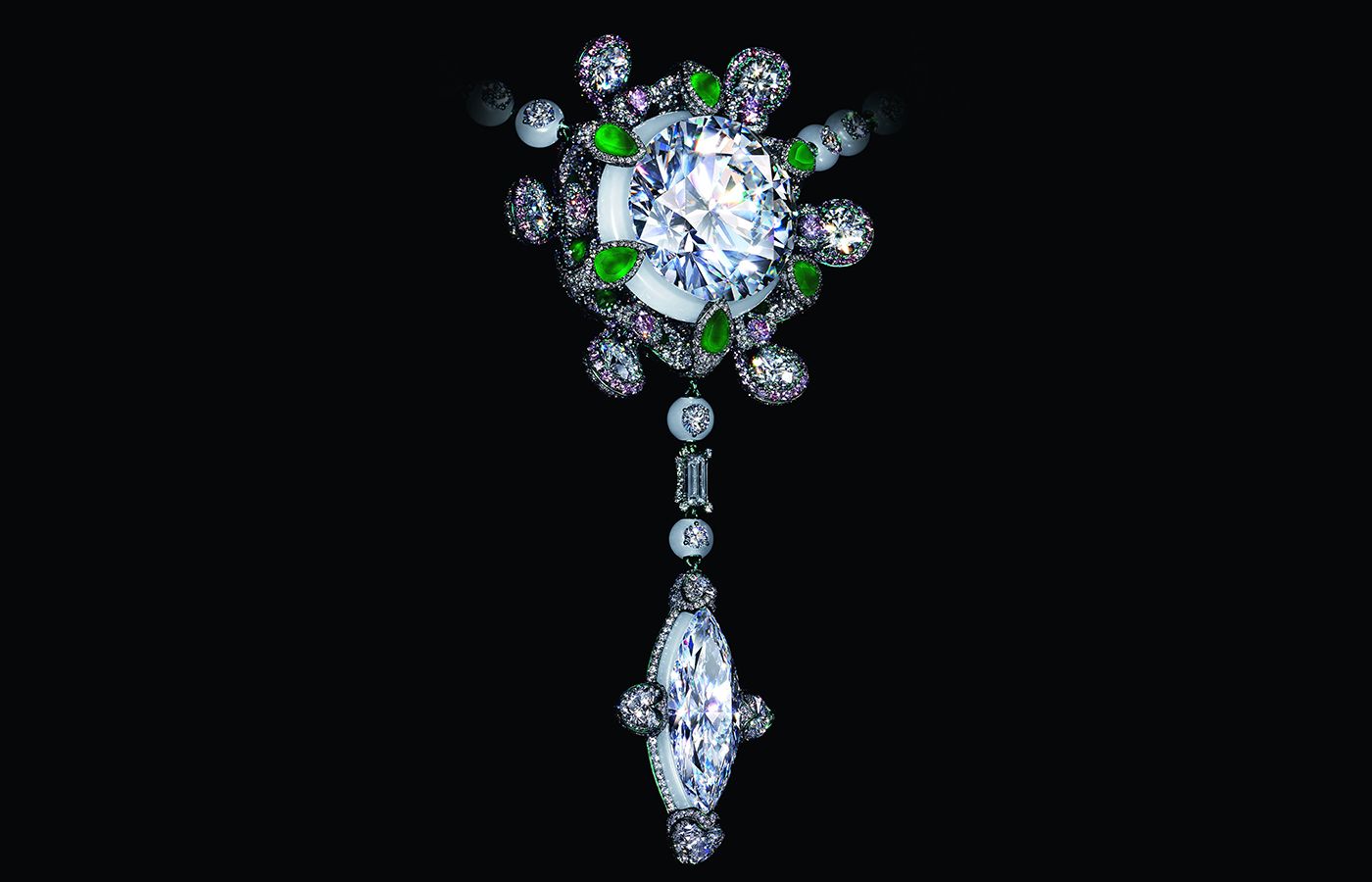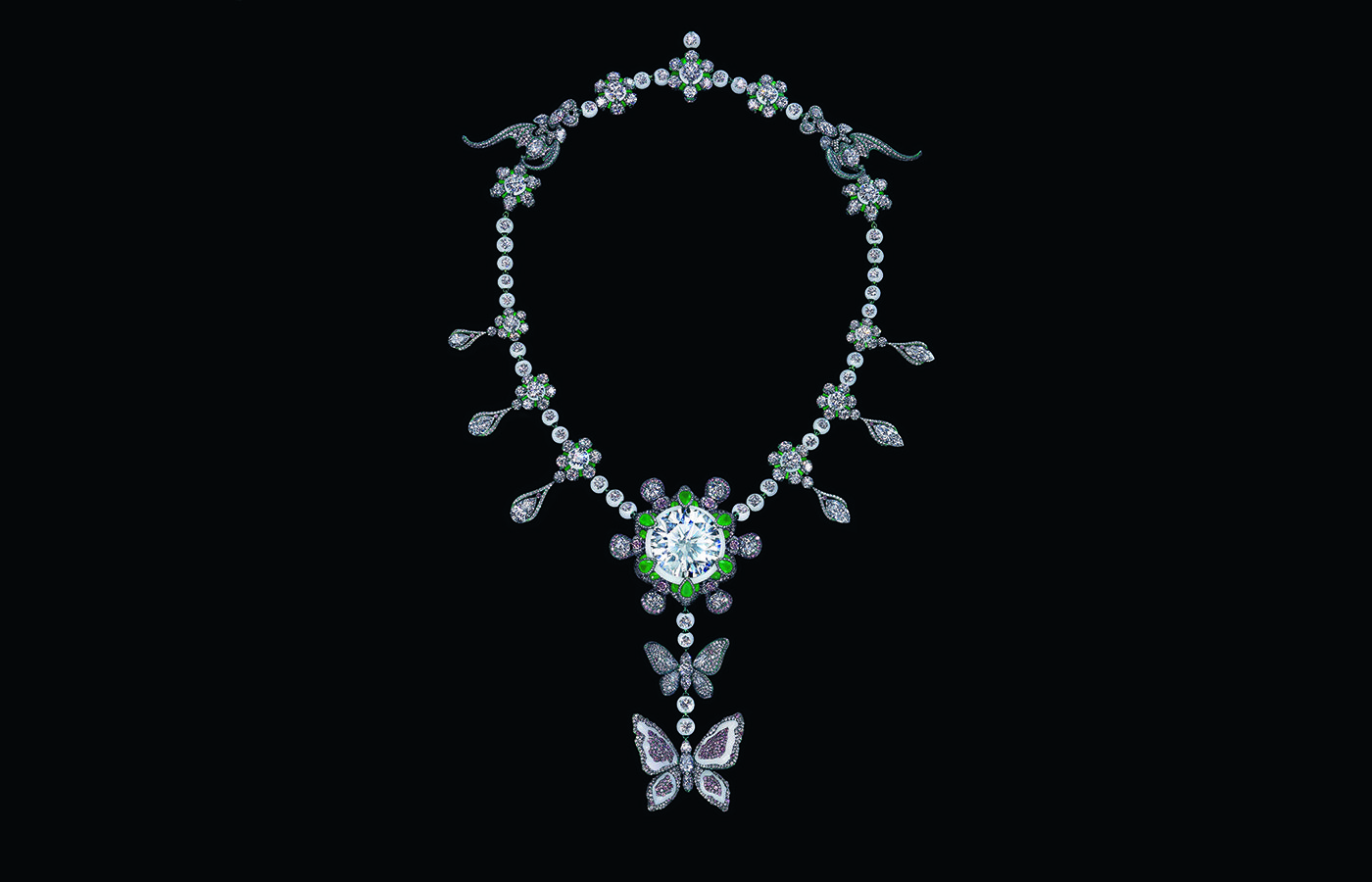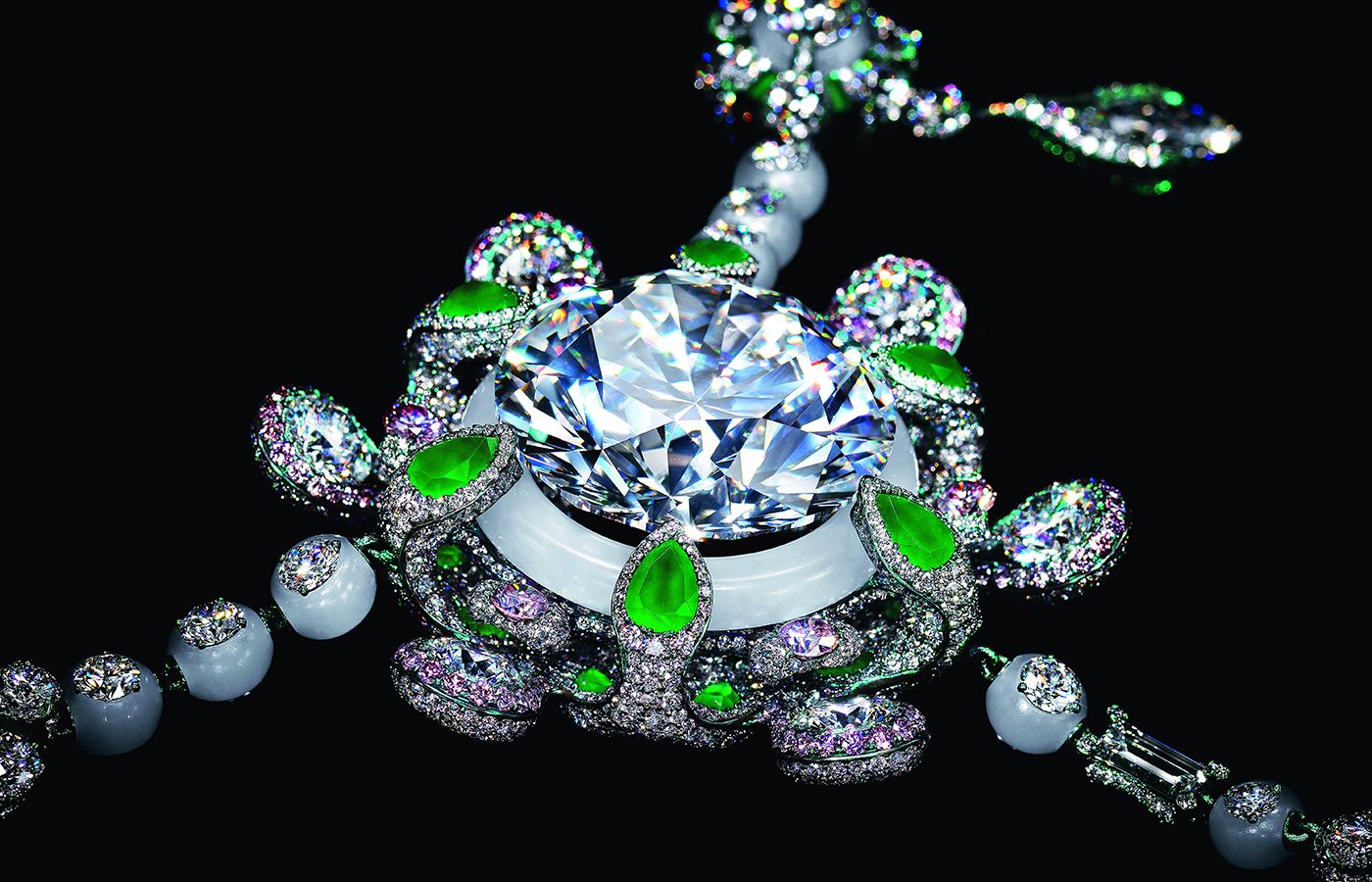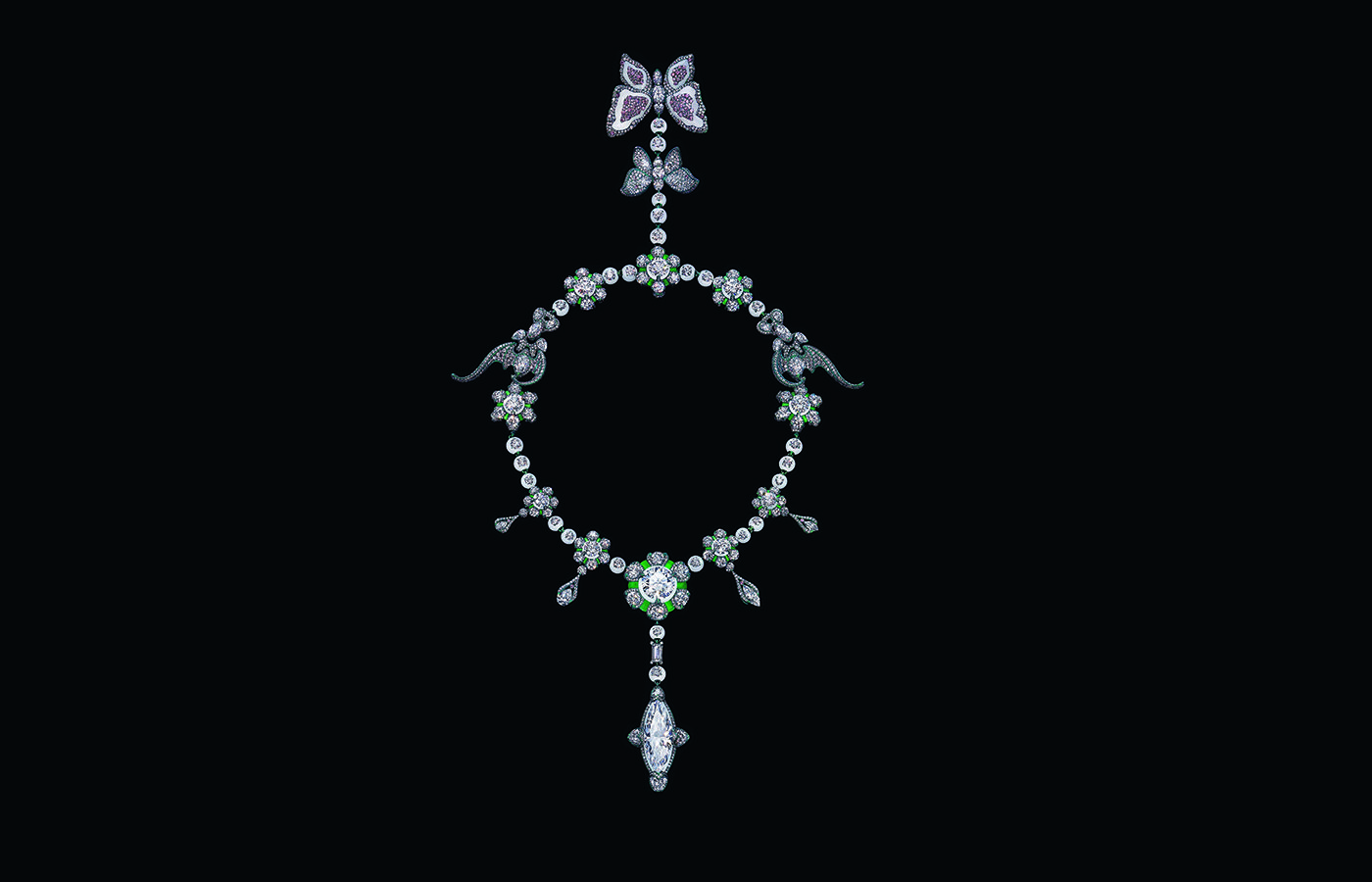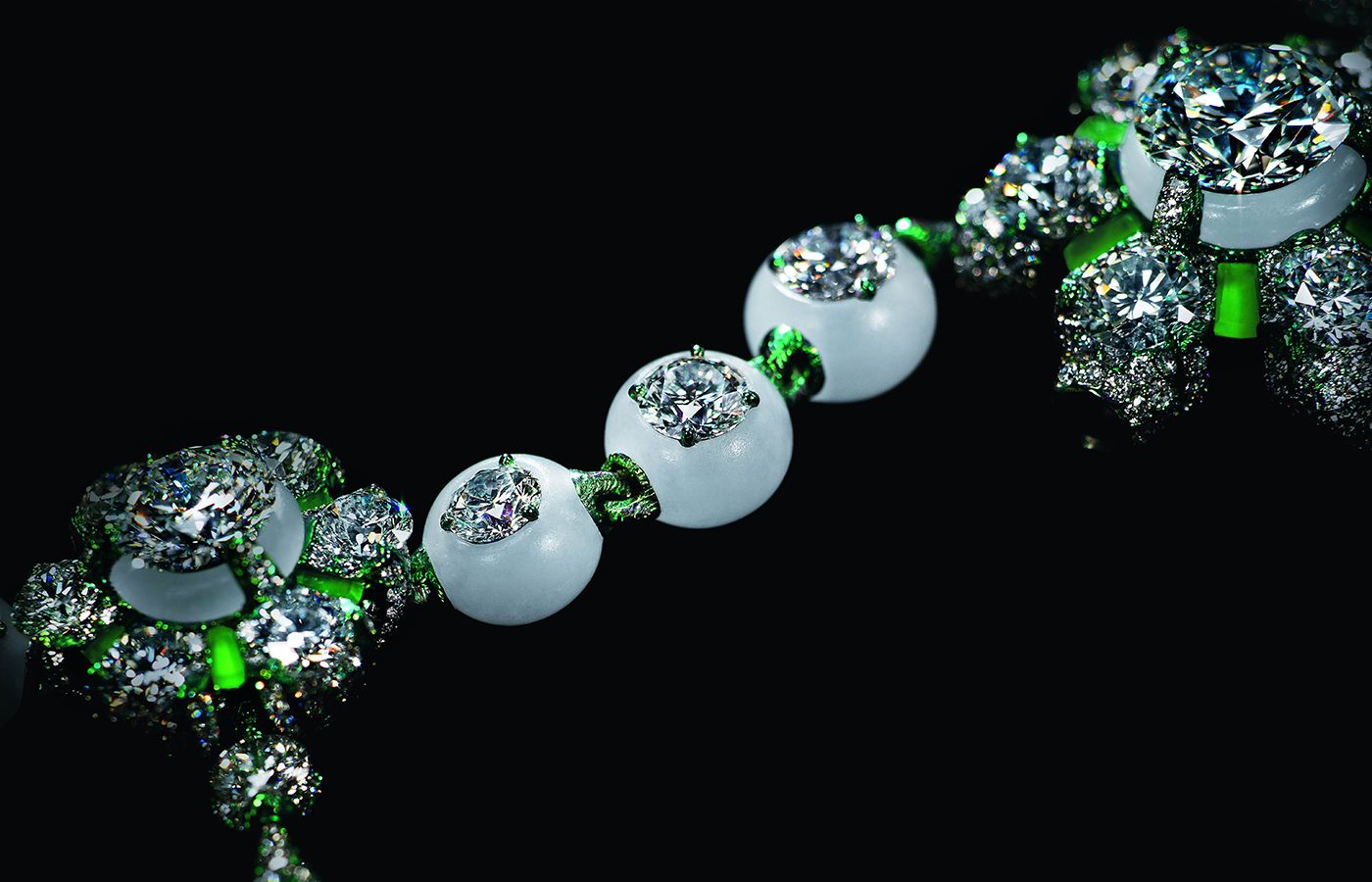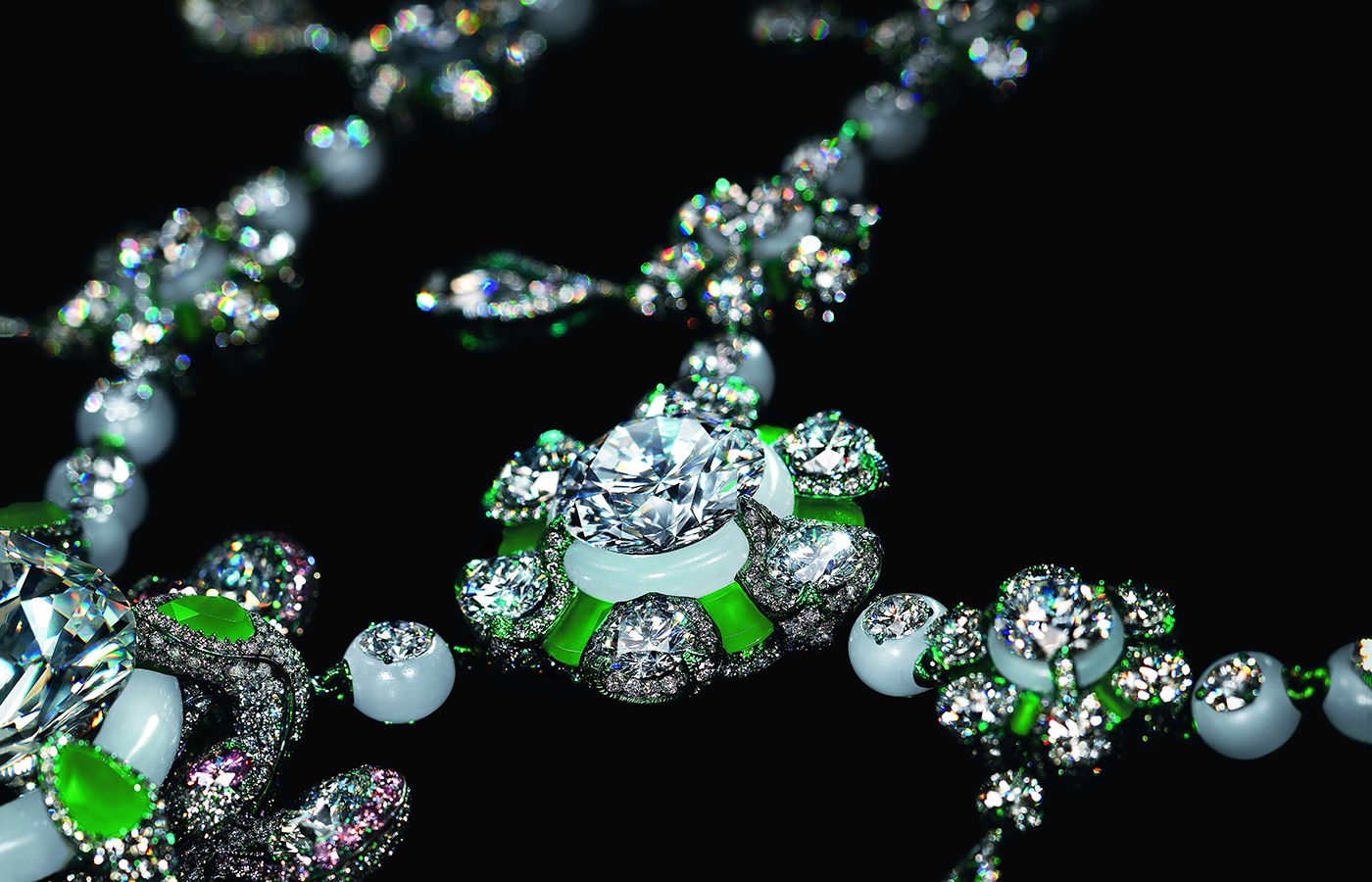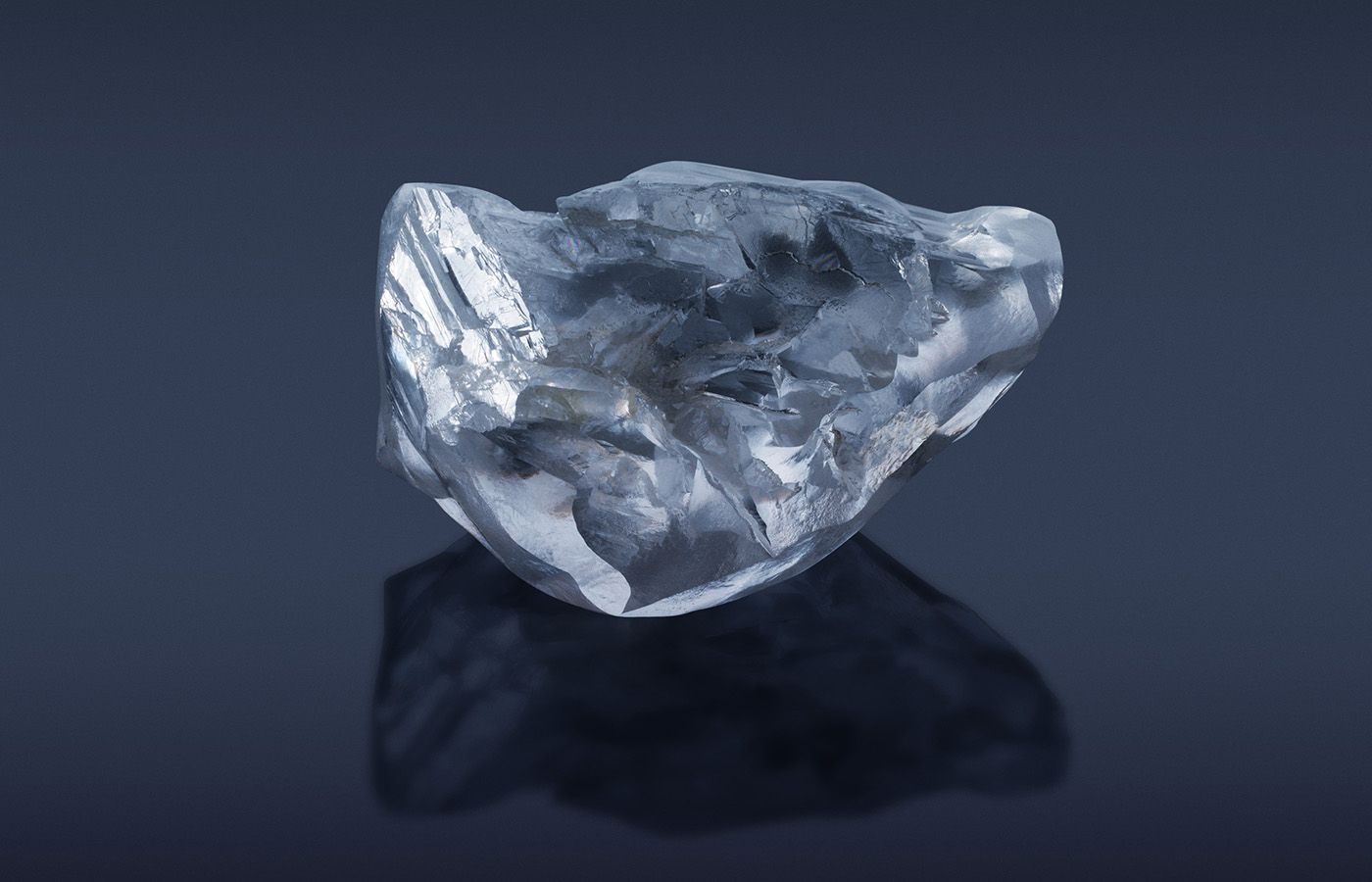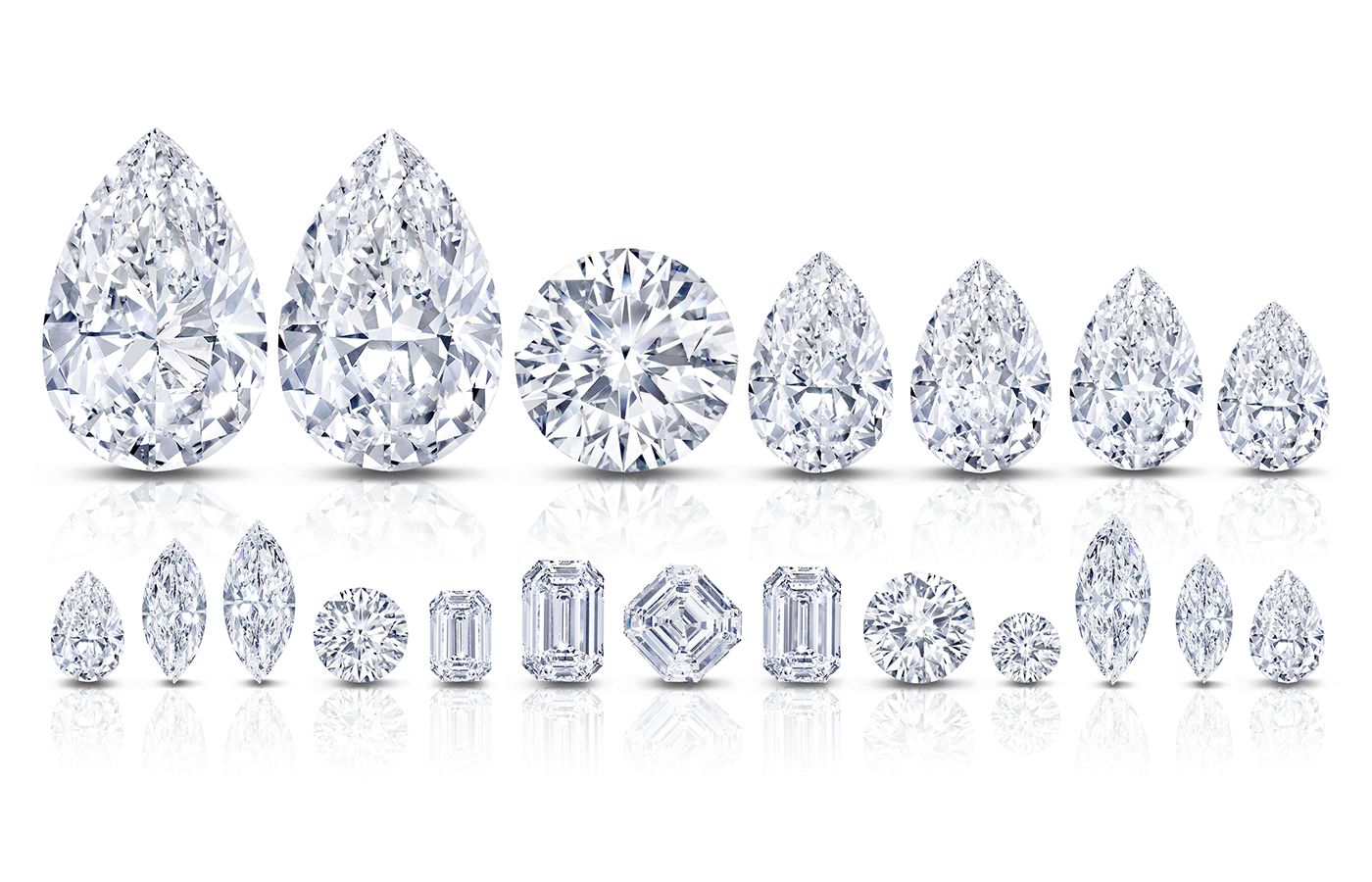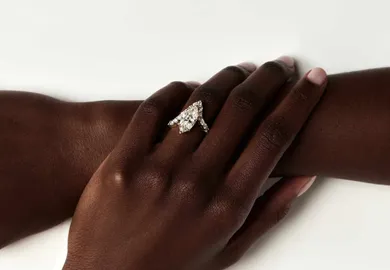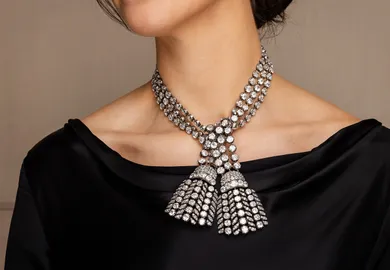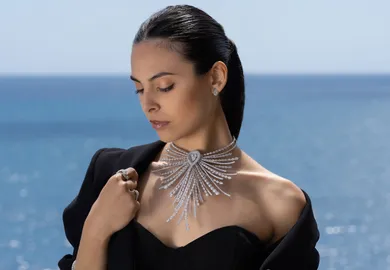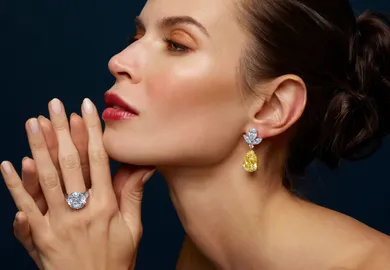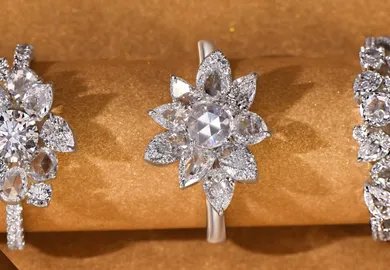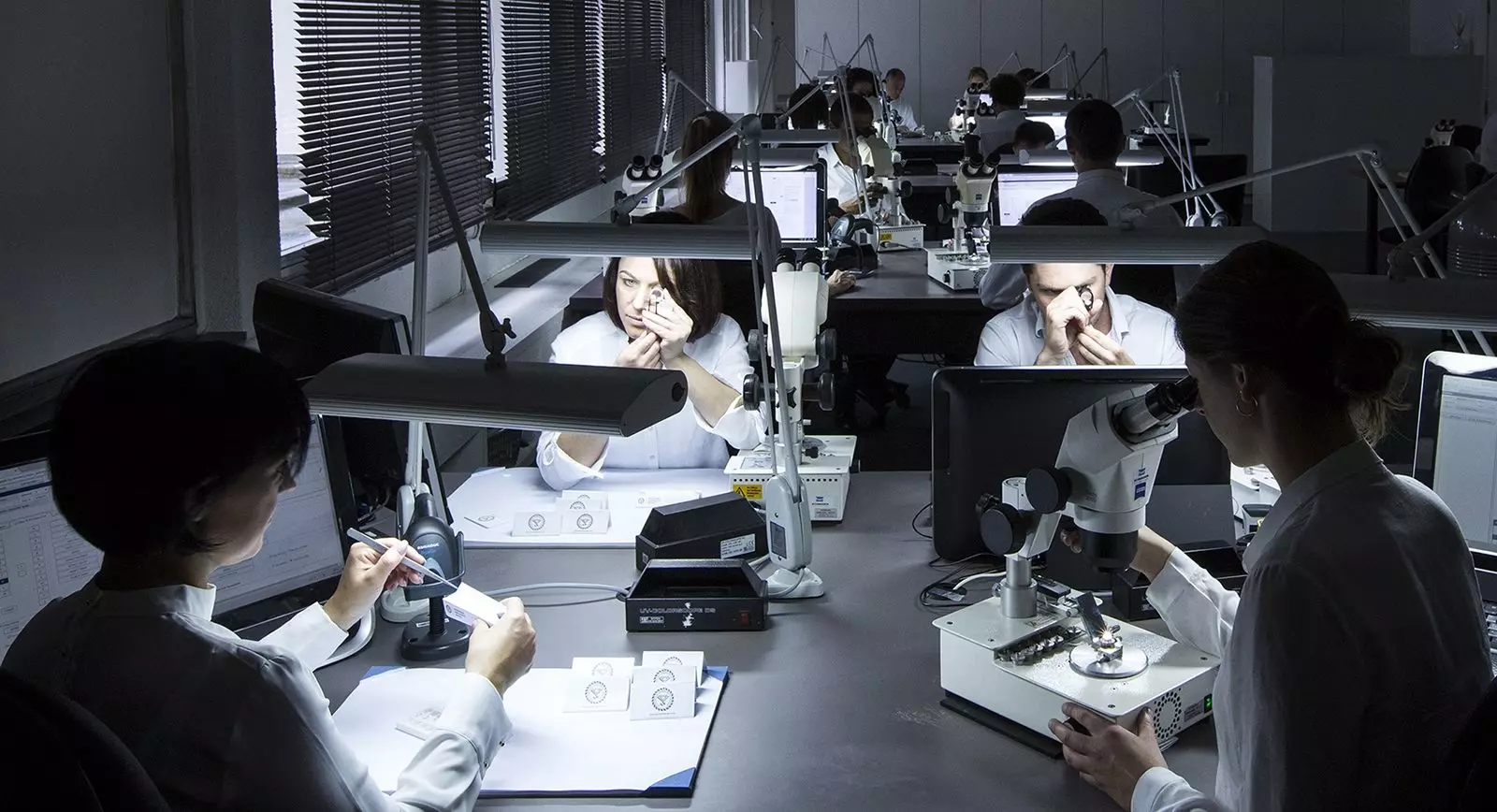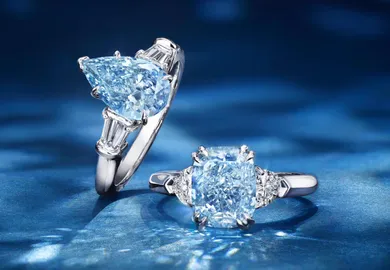
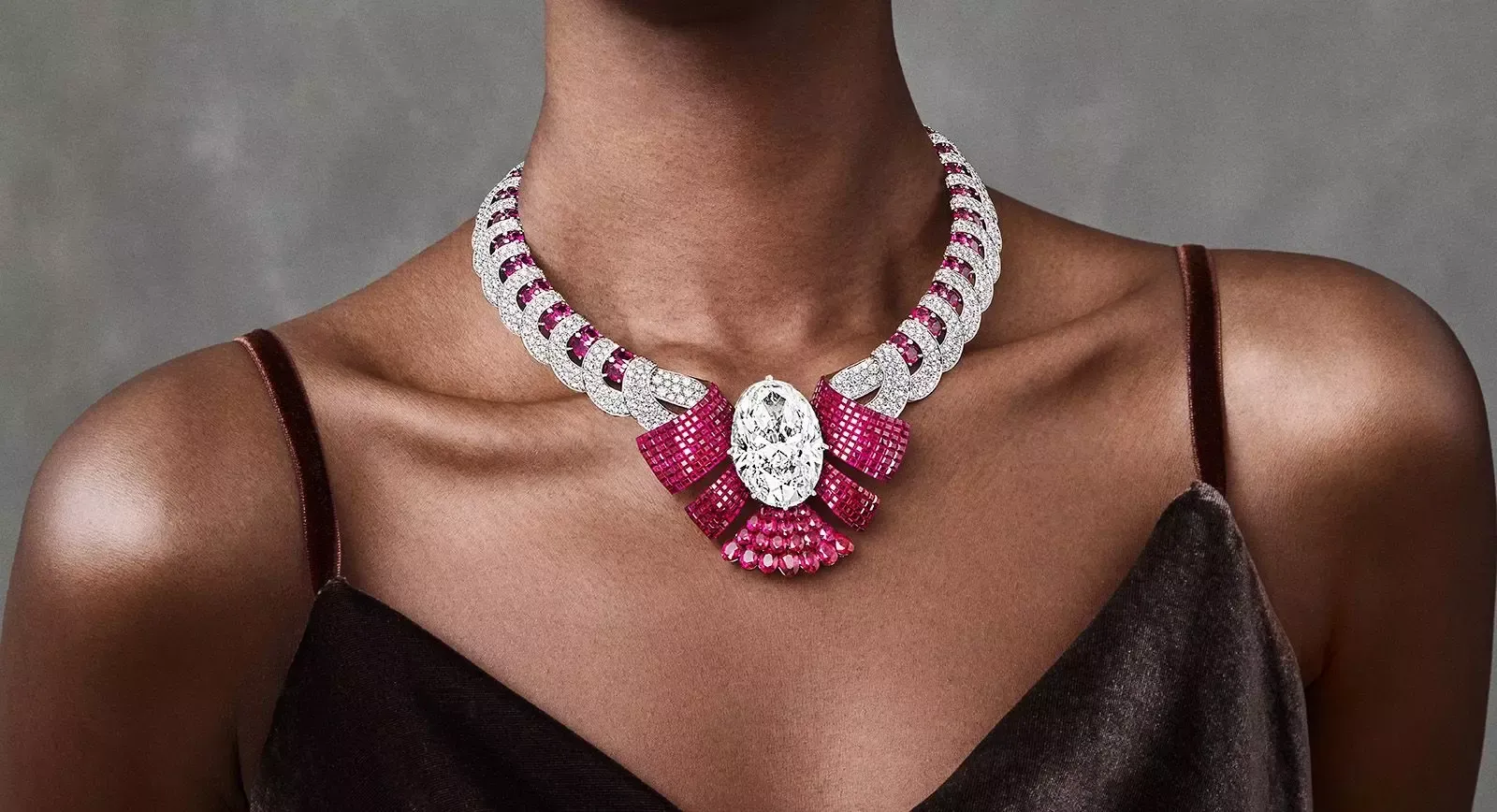
Top 15: Largest Diamonds Discovered This Century
We are only 22 years into the 21st century, yet in little more than two decades, an outstanding number of important diamonds have been unearthed. The largest diamonds discovered this century have been found in just a few locations. While Botswana and the Kingdom of Lesotho continue to yield great treasures, Canada has also put itself on the map with the most significant find by far in its relatively brief history of diamond mining, while the Peace Diamond was a symbolic turning point for the miners of Sierra Leone.
Without further ado, these are the top 15 stones discovered this century that have secured their place in diamond history. Will they be trumped by an even-greater discovery in the not-too-distant future? We will just have to wait and see.
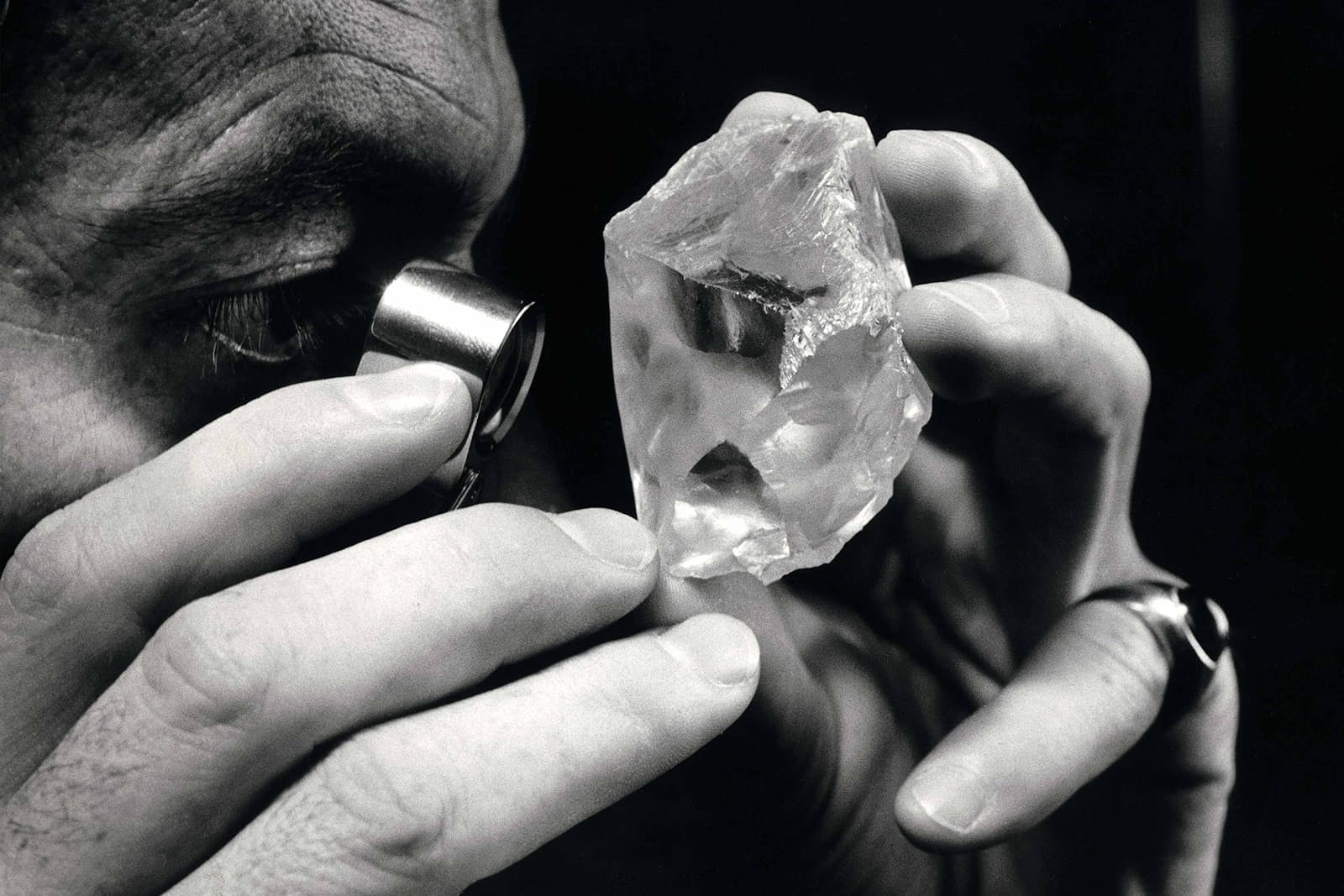
A gemmologist uses a loupe to examine the 603-carat Lesotho Promise rough diamond
1. The 1.758-carat Sewelô diamond
The second-biggest diamond in history and the largest ever found in Botswana was discovered in April 2019 at the Lucara Karowe diamond mine. Named The Sewelô, it weighed a colossal 1,758 carats, second only in size to the historic 3,107-carat Cullinan Diamond recovered in South Africa more than a century ago. That is where the similarities end, however, because The Sewelô was a very different kind of diamond. The tennis-ball-sized stone, whose name translates as “rare find” in the local Setswana language, was covered in a thin layer of carbon, giving it a frosty-grey appearance and concealing the potential contained deep within.
In a move that surprised many in the industry, this most unusual diamond reportedly sold to Louis Vuitton “for millions” at the beginning of 2020. This is the first important stone acquired by the famous French maison, which is better known for its logo-emblazoned leather goods. Louis Vuitton is collaborating with the mining company that made the discovery, and the diamond manufacturer responsible for cutting and polishing the stone, to create a collection of diamonds that are yet to be revealed.
2. A 1.174-carat diamond from Karowe, Botswana
The gem holding second place on our list – along with quite a few other stones on this page – similarly hails from the Karowe mine in Botswana and was discovered by mining company Lucara Diamond Corporation in June 2021. This 1,174-carat rough diamond is believed to be the third-largest diamond ever found, although it might have been even bigger if the experts are to be believed. The plum-sized gemstone was found at the same time as several other significant diamonds – rocks weighing in at 67 carats, 86 carats, 88 carats and 148 carats – and, as such, Lucara believes this record-breaking rock is part of a yet-larger diamond as yet beyond the reach of its miners.
As well as being impressive in size, the colour of the 1,174-carat diamond is also very attractive, according to Lucara chief executive Eira Thomas, who says it will likely produce some large top-colour diamonds. The miner has teamed with HB Antwerp, a Belgian diamond cutter, to transform this rough gem into valuable polished stones.
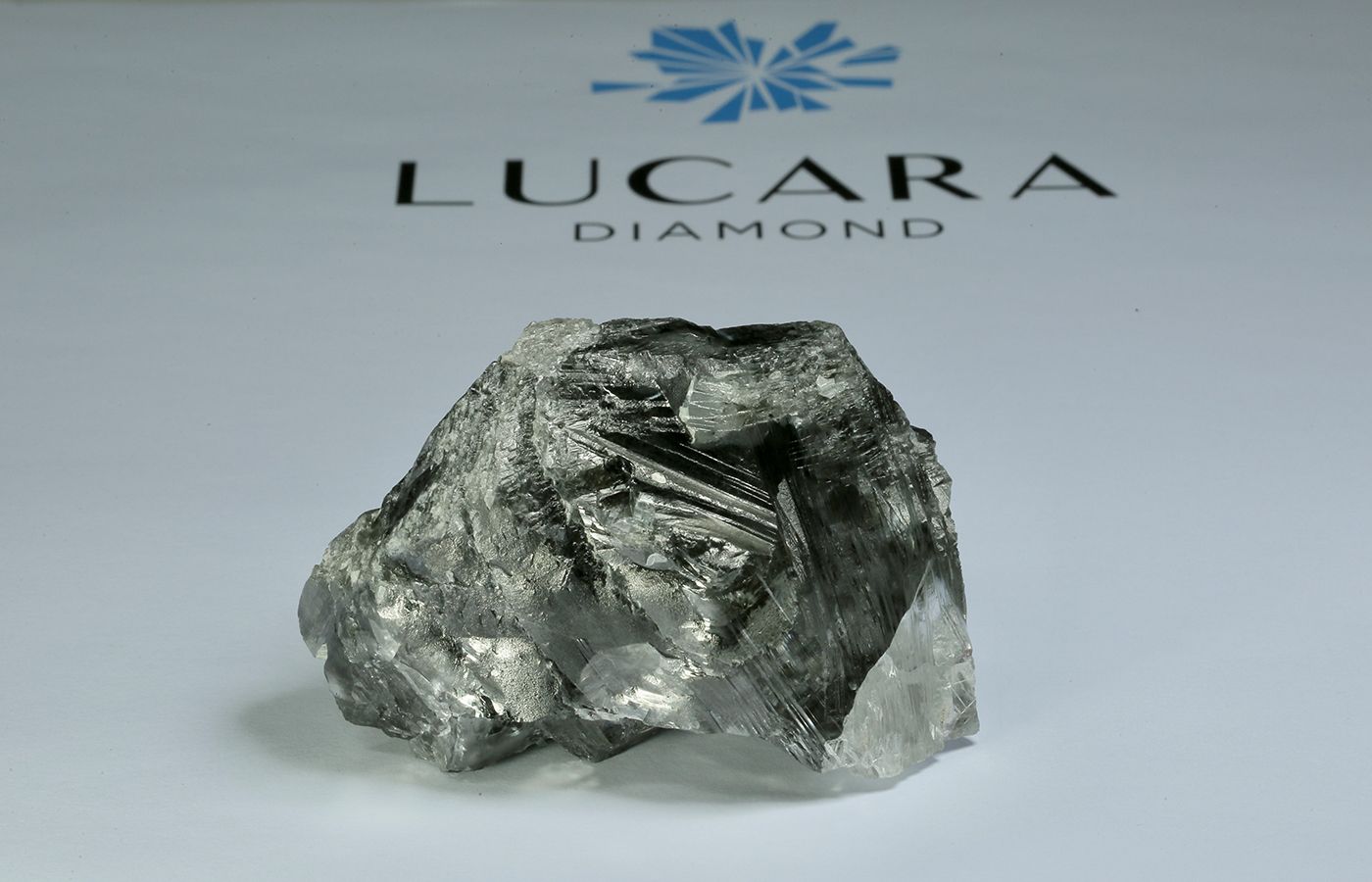
1,174-carat diamond from Karowe, Botswana
3. The 1.109-carat Lesedi La Rona diamond
The unearthing of the Lesedi La Rona at the Lucara Karowe mine in Botswana in 2015 was a momentous occasion. Weighing a whopping 1,109 carats, it immediately made history as the largest gem-quality diamond discovered since the Cullinan Diamond was revealed in 1905. Even more astonishingly, it was identified as Type IIa, which comprises only 1-2% of all diamonds found. The most chemically pure of all diamonds, Type IIa stones are almost entirely devoid of impurities, which made the prospect of cutting and polishing this epic stone even more exciting.
The Lesedi La Rona definitely ended up in the right hands when it was sold to the renowned London diamantaire Laurence Graff for $53 million. Mr Graff, who in his lifetime has acquired more important diamonds than any other jeweller, spent 18 months cutting and polishing the 1,109-carat Lesedi La Rona, revealing a magnificent collection of 67 diamonds, including the historic 302.37 carat D colour Graff Lesedi La Rona – the largest highest colour, highest clarity diamond ever certified by the GIA and the largest square emerald cut diamond in the world.
4. A 1.098-carat diamond from Jwaneng, Botswana
June 2021 was a month to remember at the Jwaneng diamond mine in Botswana, as it would mark the discovery of a diamond weighing 1,098.3 carats. The momentous rock was unearthed by Debswana, a joint venture between diamond miner De Beers Group and the Botswanan government. When it was discovered, the rock was said to be the third-largest gem-quality diamond ever found, although this title was snatched away just a week later by a 1,174-carat find 400km to the north (see entry number 2). Despite having its thunder somewhat stolen, the diamond – which is nearly three inches long, two inches wide, and an inch thick – remains the largest find in Debswana’s 50-year history.
Its previous record-breaking stone, discovered in 1993, was less than half the size at 466 carats. Debswana says it hopes to find more large diamonds in the future and has invested heavily in state-of-the-art technology that will make it easier for miners to identify large diamonds and bring them safely to the surface without breaking them.
5. A 998-carat diamond from Karowe, Botswana
In November 2020, as the world was still under the grip of a global pandemic, miners in the famously fruitful Karowe diamond mine in Botswana were making yet another impressive discovery. This time, the depths of the mine, operated by the Lucara Diamond Corporation, gave up a glittering 998-carat rough diamond of high white colour. For those adept at visualising numerical measurements, the rock was 67mm by 49mm by 45mm. It was a wonderful find to cap off what had been a successful year for the mine. In 2020, a 549-carat diamond (see entry 13) was found at Karowe, as well as more than 30 diamonds weighing at least 100 carats and 10 more exceeding 200 carats. Though the 998-carat stone was a record-breakingly large find, it did not remain so for long. Its destiny, according to Lucara, was to be split up to make many smaller diamonds.
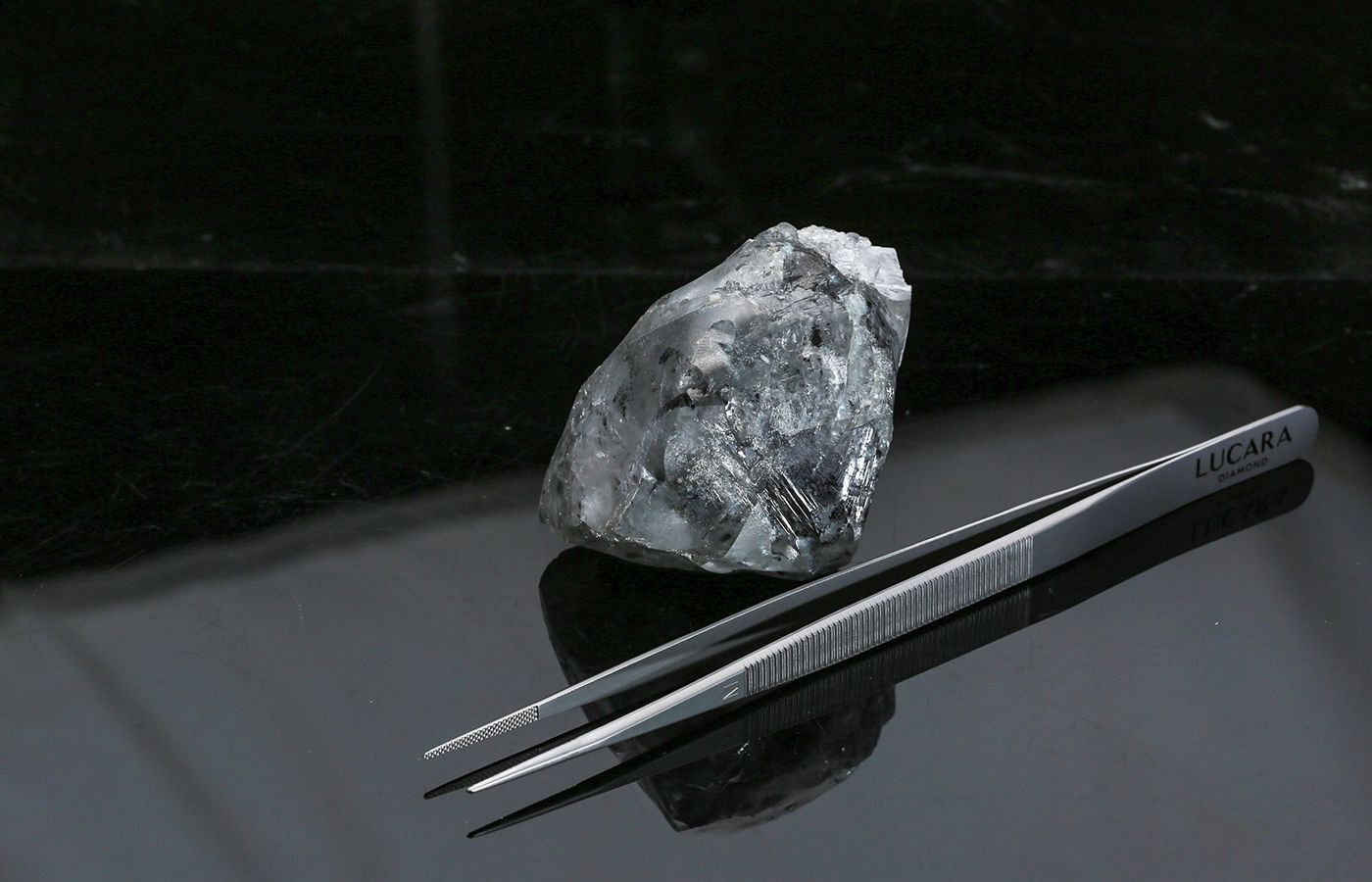
A 998-carat diamond from Karowe, Botswana discovered by the Lucara Diamond Corporation
6. The 910-carat Lesotho Legend
The Letšeng mine in the Southern African Kingdom of Lesotho, together with the Karowe mine in Botswana, consistently produces some of the highest-quality diamonds in the world. In 2018, Gem Diamonds, owner of the mine, revealed its greatest diamond discovery to date: a 910-carat rough diamond the size of two golf balls. Named the Lesotho Legend, the huge diamond was identified as a top D colour and Type IIa, making it one of the purest and most valuable diamonds on earth. The diamond was sold that same year to French jewellery house Van Cleef & Arpels for $40 million.
The jeweller teamed with Diamcad, a diamond cutter based in Antwerp, to split the rough gem into 67 diamonds totalling 441.75 carats – the diamond lost more than half its original weight during the cutting process. The resulting diamonds were set into a 25-piece high jewellery collection Legend of Diamonds, which was released in 2022. The largest stones include a 79.35-carat oval and a 51.14-carat emerald cut.
7. The 813-carat Constellation I
In what was an incredible year for Lucara, the Canadian diamond company that owns the Karowe mine, a second enormous rough diamond was uncovered in Botswana in 2015. Named The Constellation, it weighed 813 carats and, like the Lesedi La Rona and the Lesotho Legend, was also an exceptionally pure Type IIa diamond. In 2016, it sold to Dubai-based Nemesis International, and its whereabouts were unknown until, in 2019, Nemesis revealed a sensational 313-carat emerald-cut diamond at the Dubai Diamond Conference.
At the time of its unveiling, Nemesis claimed that the newly named Constellation I diamond was not only the largest D colour diamond ever graded by the GIA but also the first UAE-crafted stone of importance, with the majority of the cutting and polishing taking place in the region.
8. The 709-carat Peace Diamond
Of all the stones in our top 15, the Peace Diamond stands out as the luckiest find of them all. Many locals in Sierra Leone search for diamonds as a way to earn a living, and in 2017, a team of artisanal diggers hired by Pastor Emmanuel Momoh, struck it lucky in Koryardu, a village with no running water or electricity. Sifting through the grit and sand in a muddy mining pool, one of the miners happened upon a diamond that was so large no one believed it could possibly be genuine. When it was confirmed that the yellow 709-carat diamond, which measured 2.5 inches wide by 1 inch deep, was indeed real, the pastor ignored offers to smuggle the stone out of Sierra Leone and instead took it straight to the government.
Keen to right the wrongs of years of unscrupulous mining practices in Sierra Leone, the government announced that it would sell the diamond and others that followed through legitimate channels in a completely transparent manner. Named the Peace Diamond because a proportion of the proceeds of its sale would directly benefit the community in which the miners lived, the 709-carat stone was sold to the jeweller and diamantaire Laurence Graff for $6.5 million in December 2017.
9. The 603-carat Lesotho Promise diamond
Despite being eight times smaller than the United Kingdom, the Kingdom of Lesotho has a history of producing large diamonds of unusually high quality. In August 2006, Gem Diamonds revealed that it had uncovered a 603-carat diamond at its Letšeng mine that was exceptional in size as well as being a top D colour and Type IIa. At the time of its discovery, it was the largest diamond find of the century. Named the Lesotho Promise, it was sold to Graff for $12.36 million. The jeweller’s cutting and polishing division, SAFDICO, set about transforming it into 26 D Flawless polished diamonds, including an impressive 76.41-carat pear-shaped diamond. All 26 diamonds were set into the single, spectacular Lesotho Promise necklace crafted by Graff.
10. The 581-carat Wynn diamond
The 581-carat Wynn diamond was an alluvial diamond discovered in 2002 in the Amazon River in Brazil. It was expertly cut and polished in Antwerp, yielding a magnificent H colour, VS1 clarity, 230-carat pear shape stone that was sold to Steve Wynn in 2007. Wynn, the creator of some of Las Vegas’s most iconic casinos, reportedly has the stone set in an incredible Cartier diamond necklace. In 2012, there was a whiff of scandal around this large stone. Court documents filed in February of that year claimed that the necklace had been the subject of a failed auction in 2011. Los Angeles diamond dealer Diane Breitman, known as the Queen of Diamonds, claimed that Wynn had asked her to sell his namesake diamond in a private auction in Las Vegas and that a Texan dealer named Brett Stettner had agreed to pay $23.5 million for it. When negotiations broke down after the auction, Wynn cancelled the sale, leaving the Queen of Diamonds to attempt to sue for what she believed was her missing $1 million commission.

The whereabouts of the 581-carat Wynn diamond are unknown
11. The 552-carat Diavik diamond
Near the Arctic Circle, Canada’s Diavik mine is situated in one of the most inhospitable environments on earth, yet it has emerged as one of the world’s leading sources of gem-quality diamonds. In 2018, a game-changing stone was recovered at the mine: a yellow diamond weighing a mighty 552 carats. As big as a chicken’s egg, it was the largest diamond ever found in North America and represented a major milestone for the Canadian diamond industry, which is playing an increasingly important role in the production of diamonds globally. Dominion, which owns the mine, announced that it wasn’t planning on selling the rough diamond. Instead, it cut the stone into seven diamonds, which were auctioned off at Christie’s New York in 2021. The largest of the gems is called Dancing Sun and is a 204.36-carat fancy intense yellow diamond. It sold for 4.95 million during the auction.
12. The 550-carat Letšeng Star
Yet another diamond in our top 15 discovered in the tiny sovereign state of Lesotho is the 550-carat Letšeng Star. It was named to signify the growing number of ‘star’ stones – impressive diamonds of major carat weights – to have emerged from the prolific Letšeng mine in the Maluti Mountains. Recovered in August 2011 by Gem Diamonds, the rough diamond was sold to the diamantaire Laurence Graff, who employed the skills of Graff’s expert diamond cutters to polish the stone in-house. It yielded a superb collection of D Flawless stones, including 12 identical pairs of pear shape diamonds, alongside the principal stone: a spectacular 33-carat pear-shaped diamond.
13. A 549-carat diamond recovered in Botswana
In February 2020, the Lucara Diamond Corporation announced that it had recovered a 549-carat diamond at the Karowe mine in Botswana. The diamond was recovered from the same ore block as the Lesedi La Rona and The Constellation. Just like these other world-famous diamonds, it is an exceptionally pure, highly valuable Type IIa diamond. The gemstone was purchased later that year by Louis Vuitton, further signalling its intent to be a serious diamond jewellery player; the fashion house had already purchased the Lucara’s 1,758-carat Sewelô diamond that tops this list earlier in 2020. At the time, it said that it planned to offer up the rough stone to the whims of a few very special clients, teaming with Belgian cutter HB Antwerp to offer bespoke cuts dictated by its VIPs.
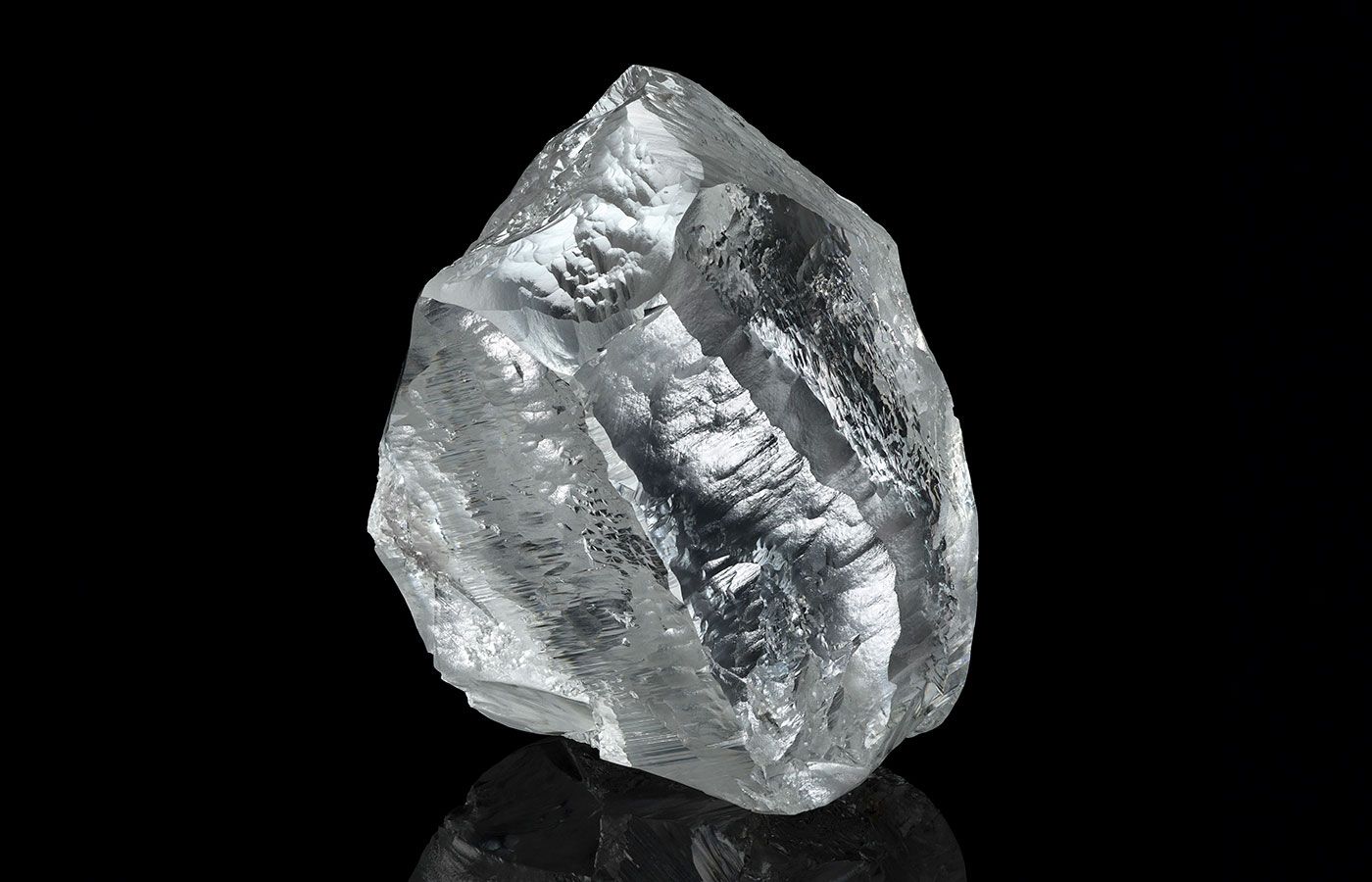
The 549-carat diamond recovered in Botswana
14. The 507-carat Cullinan Heritage
The Cullinan mine in South Africa is well known for expelling some of history’s most impressive diamonds, including the largest gem-quality diamond ever found, the 3,106.75-carat Cullinan diamond discovered in 1905. On September 24th 2009, on South Africa’s Heritage Day, another major discovery was made at the mine. This time, a flawless 507-carat rough diamond was unearthed and named the Cullinan Heritage in recognition of the timing of its discovery. In February 2010, the diamond – described as being the size of a chicken egg – broke the record for the price paid for a rough diamond when it sold at auction for $35.3million to Chinese jewellery store Chow Tai Fook.
It took three years for the rough diamond to be cut and polished into smaller stones, the largest of which was a 104-carat D-colour internally flawless round brilliant diamond. These stones were then entrusted to master jeweller Wallace Chan, who set them all in a floral-inspired Heritage in Bloom necklace that was valued at $200 million when it was unveiled in the autumn of 2015.
15. The 493-carat Letšeng Legacy
Mining company Gem Diamonds uncovered the 493-carat rough diamond that would become known as the Letšeng Legacy at its prolific Letšeng le Tera mine in the African kingdom of Lesotho in September 2007. By November of that year, the historic stone was already up for auction. The large colourless diamond caused a bidding frenzy, with 11 hopeful diamantaires competing to win the stone. The victor was the famous London jeweller Laurence Graff, who secured the stone through his diamond-cutting company SAFDICO for $10.4 million.
The art-loving Graff had already been on somewhat of a spending spree that week, having placed the winning bids on original works by Andy Warhol and Basquiat at Christie’s New York the night before, costing him an even more staggering total of $23 million. According to Gem Diamonds, the Letšeng Legacy has since been split into 20 smaller diamonds. Graff is known for his love of large stones and has acquired many important gems in this list, including the Lesedi La Rona, the Peace Diamond, the Lesotho Promise and the Letšeng Star.
It is exciting to think that there could be more epic diamonds hidden deep in the ground, just waiting to be found. Only time will tell when the next record-breaking stone will be revealed.

WORDS
Rachael Taylor is a sought-after speaker, industry consultant and judge at prestigious jewellery competitions including the UK Jewellery Awards and The Goldsmiths’ Craft and Design Council Awards. She is also the author of two books on jewellery.
